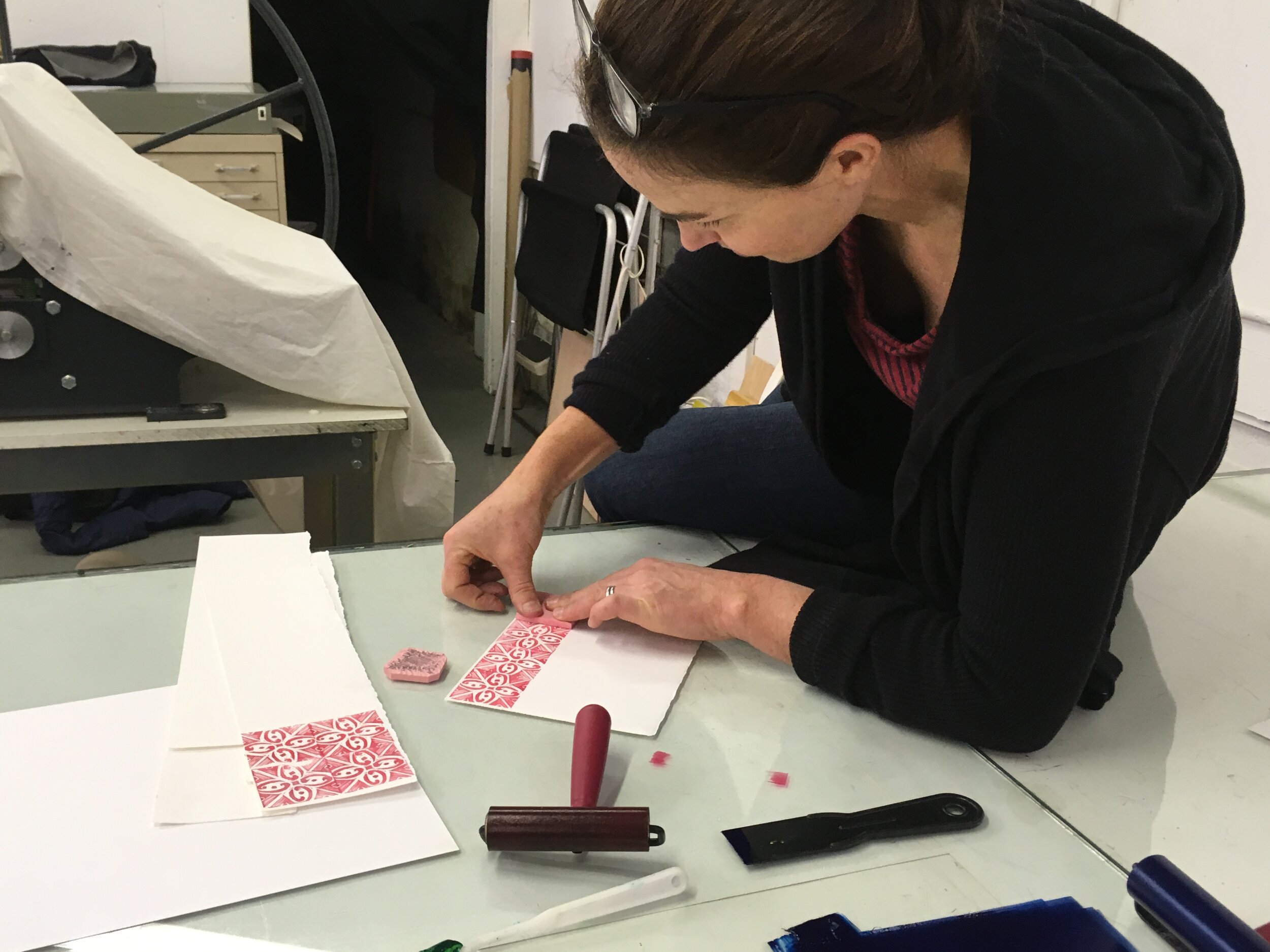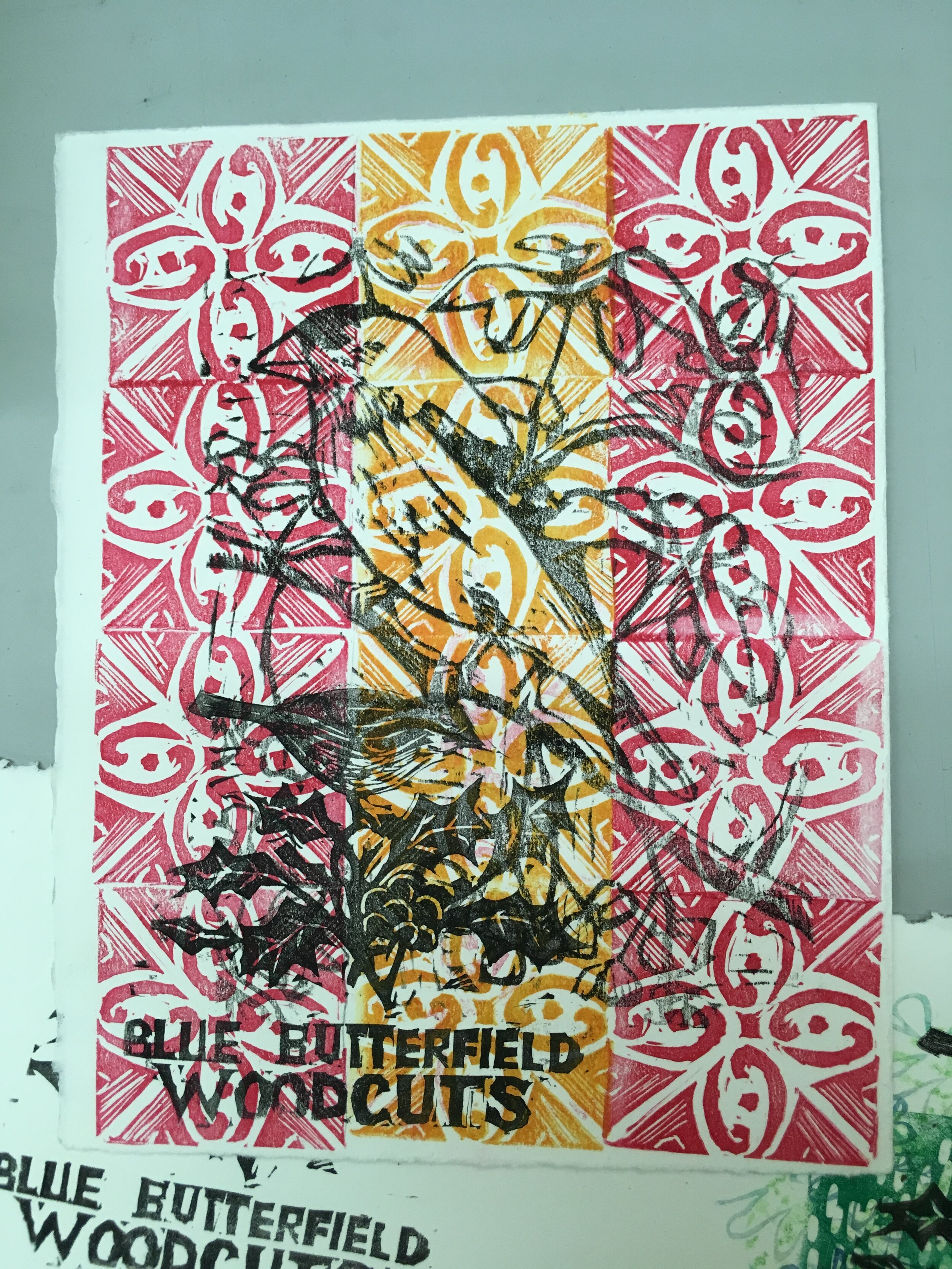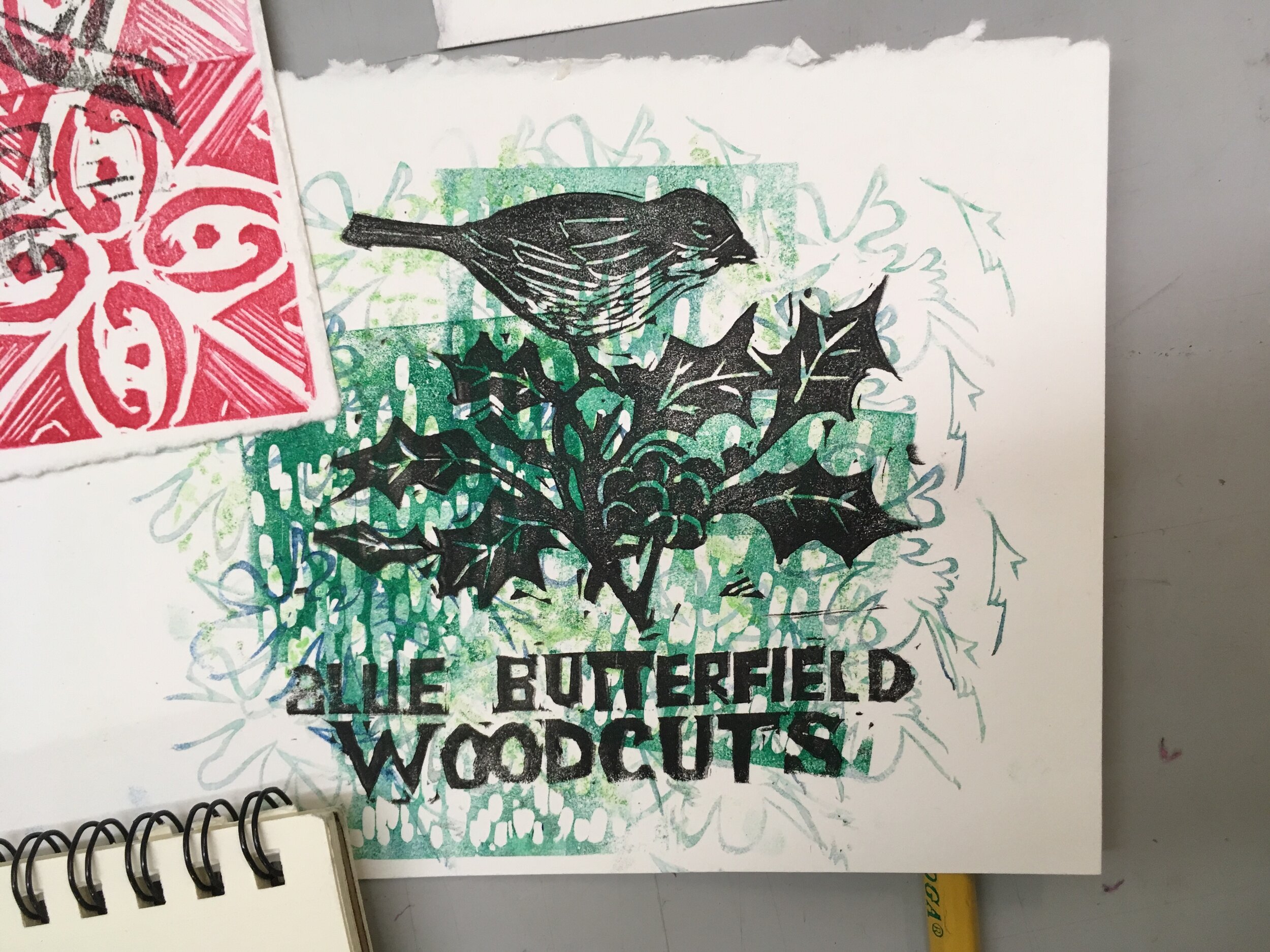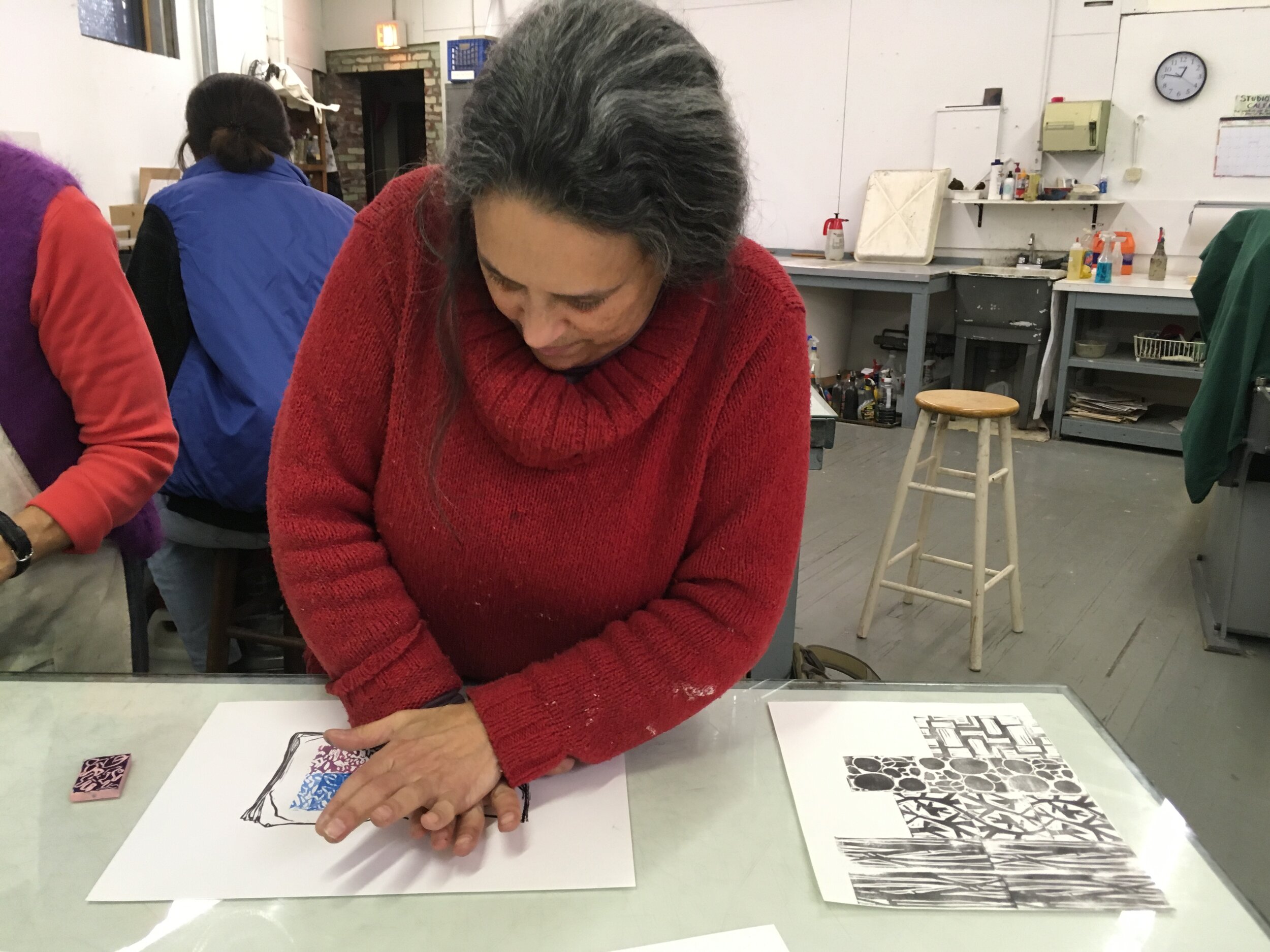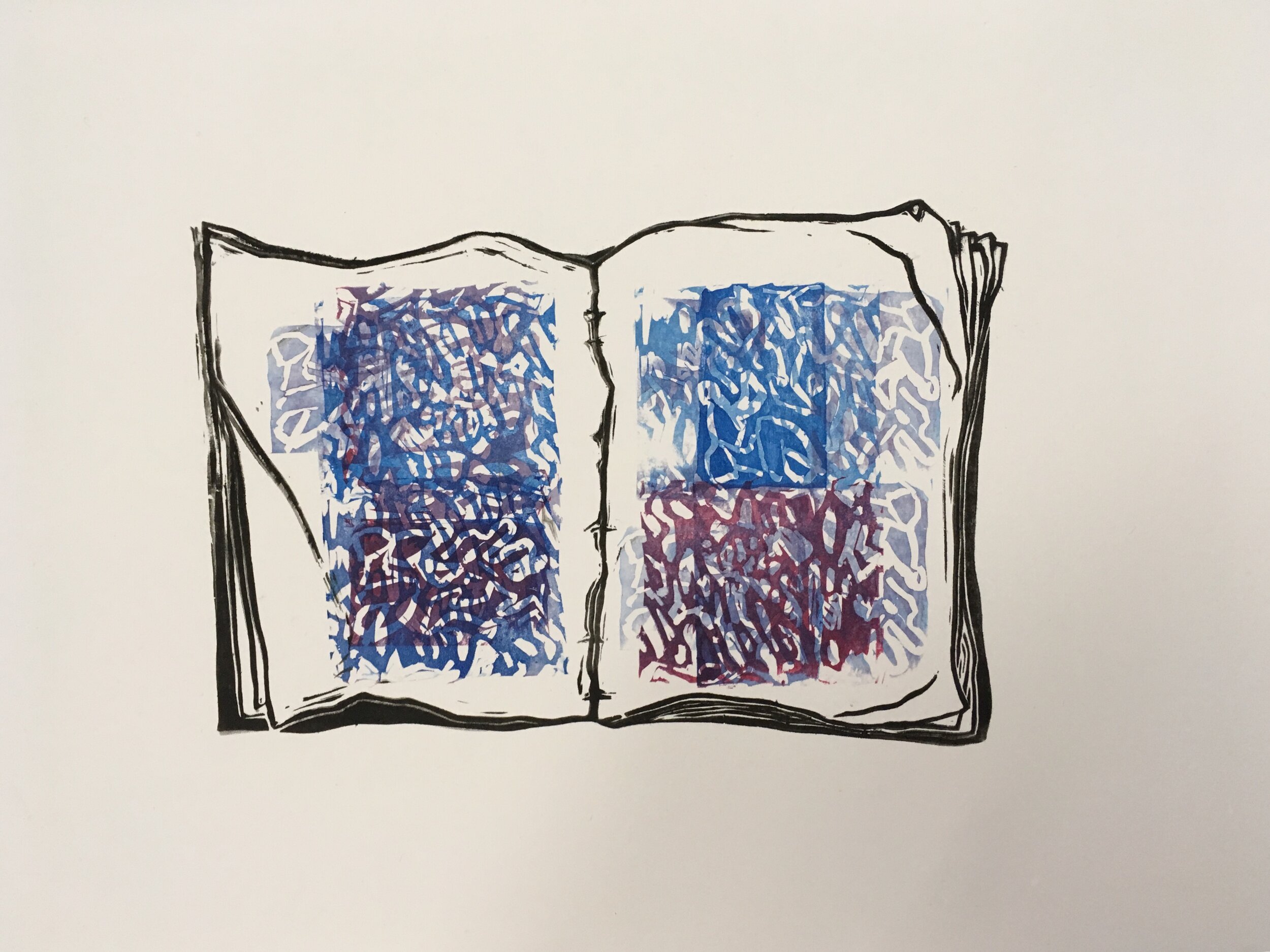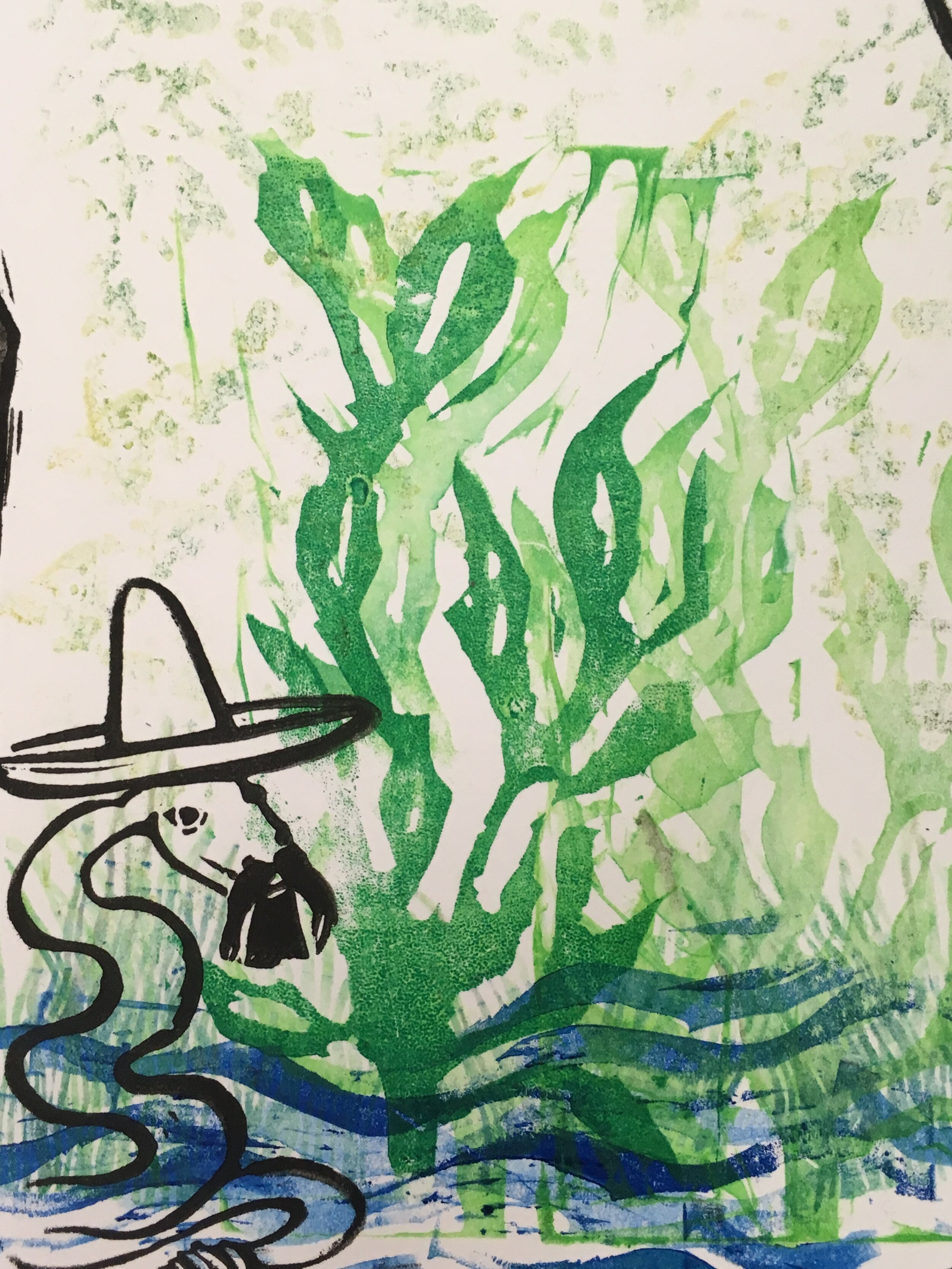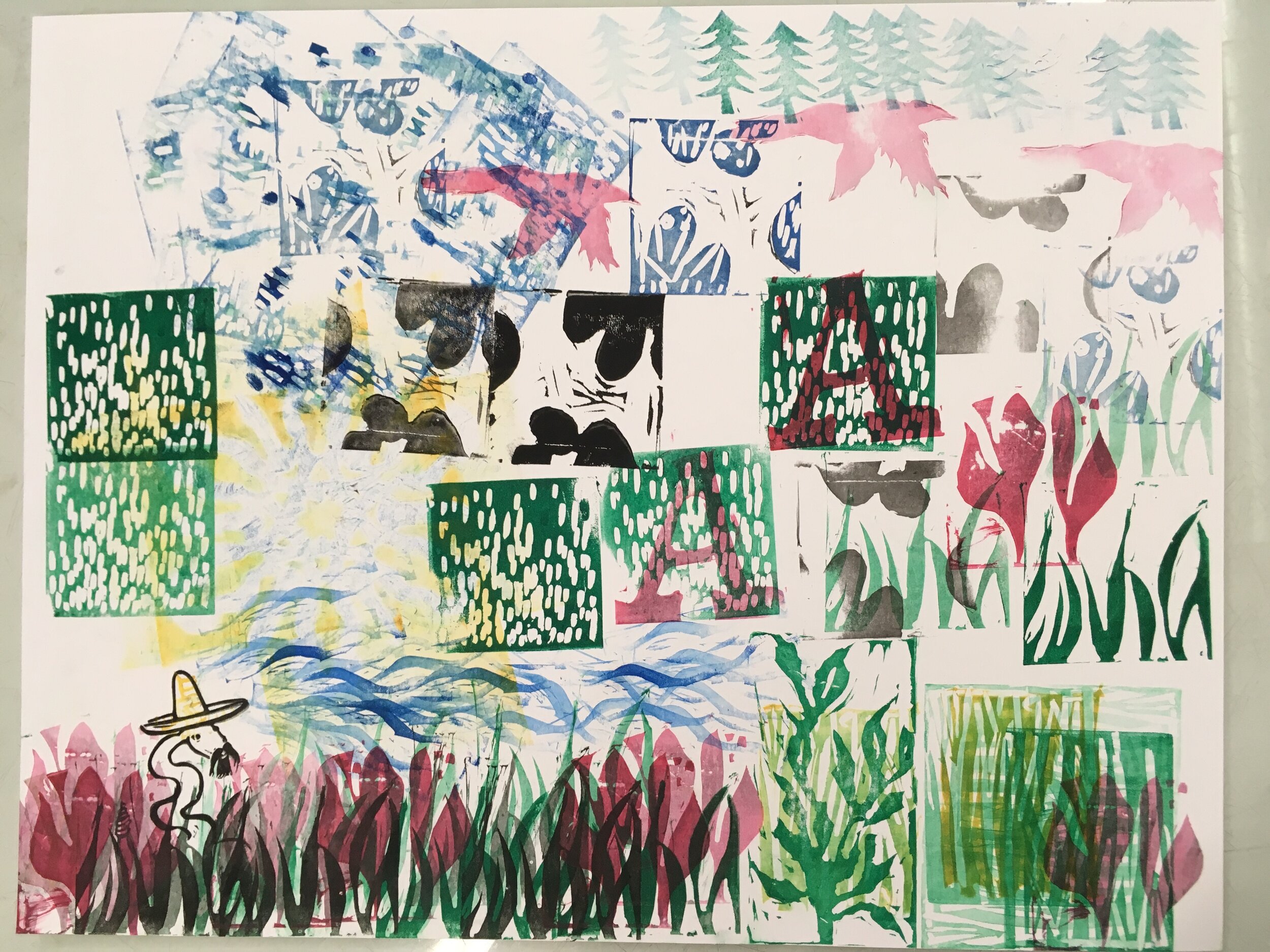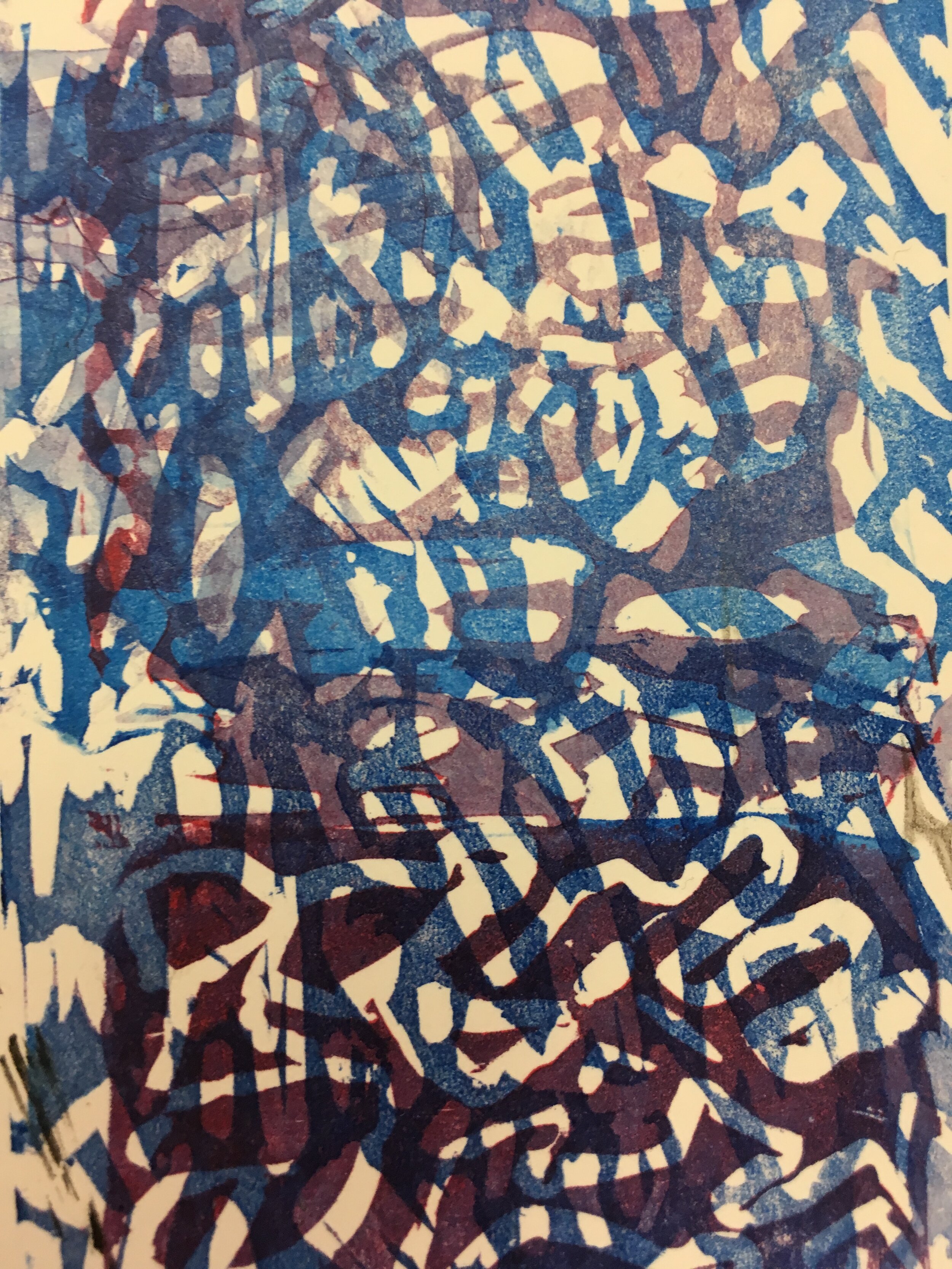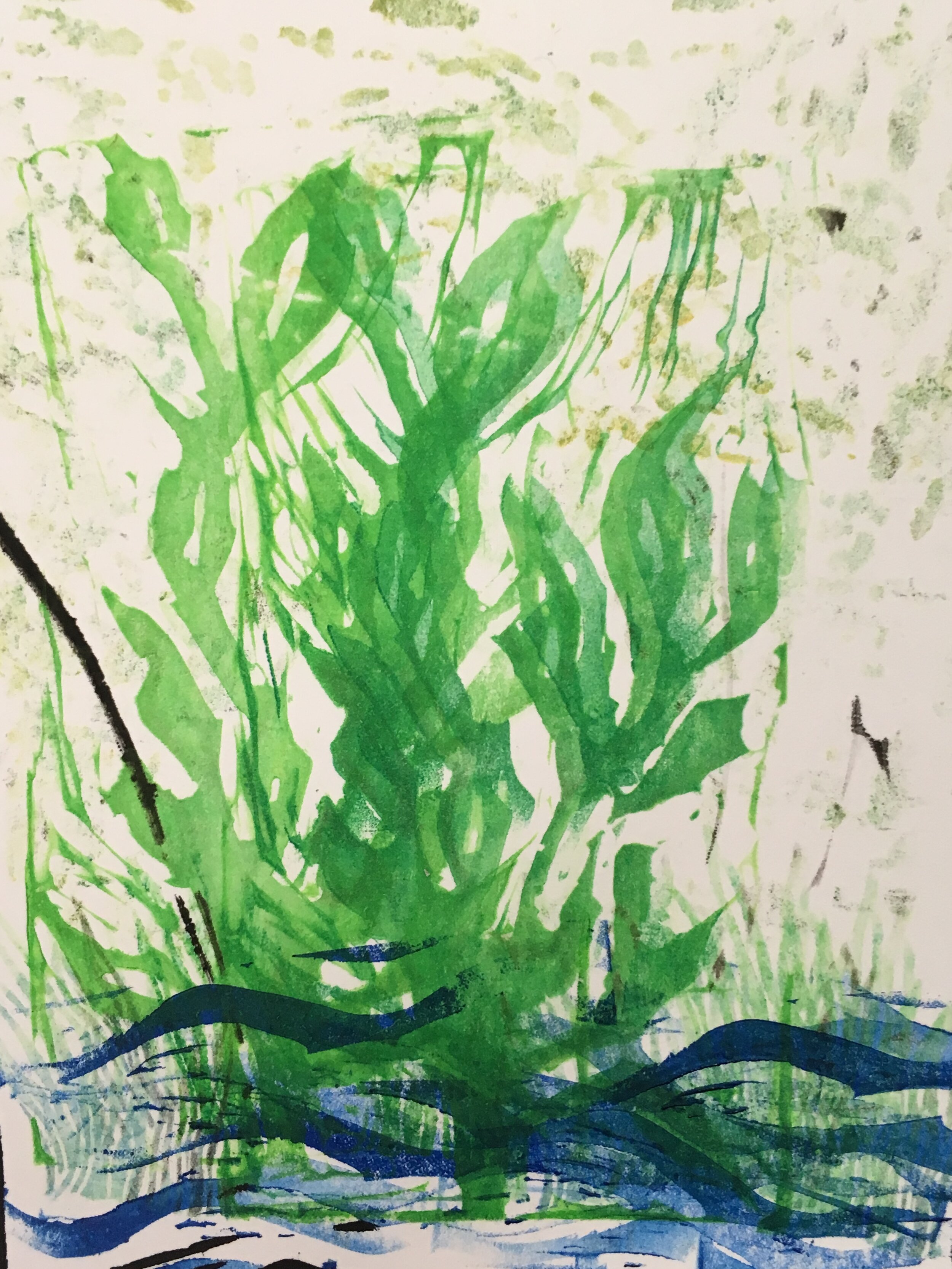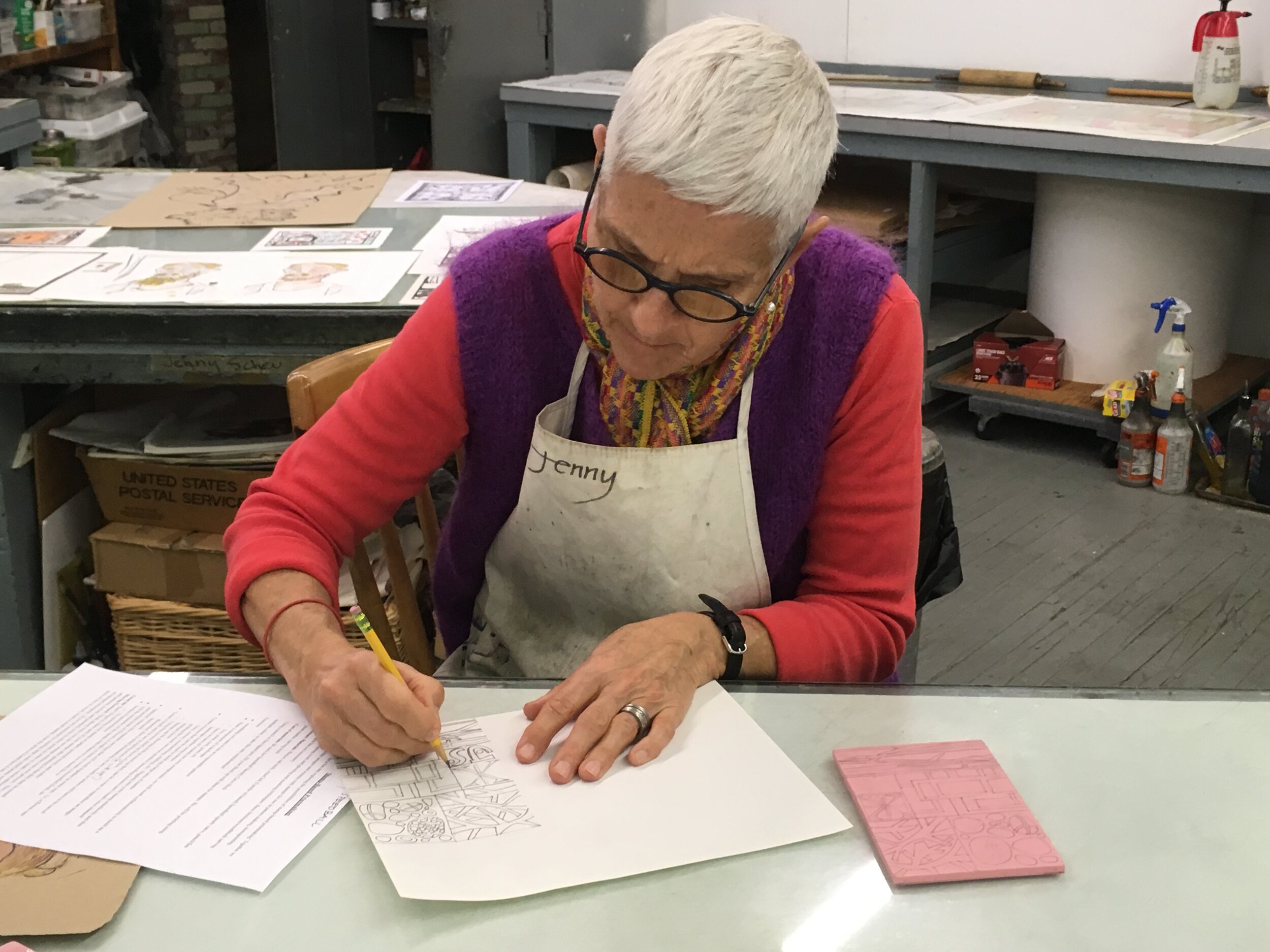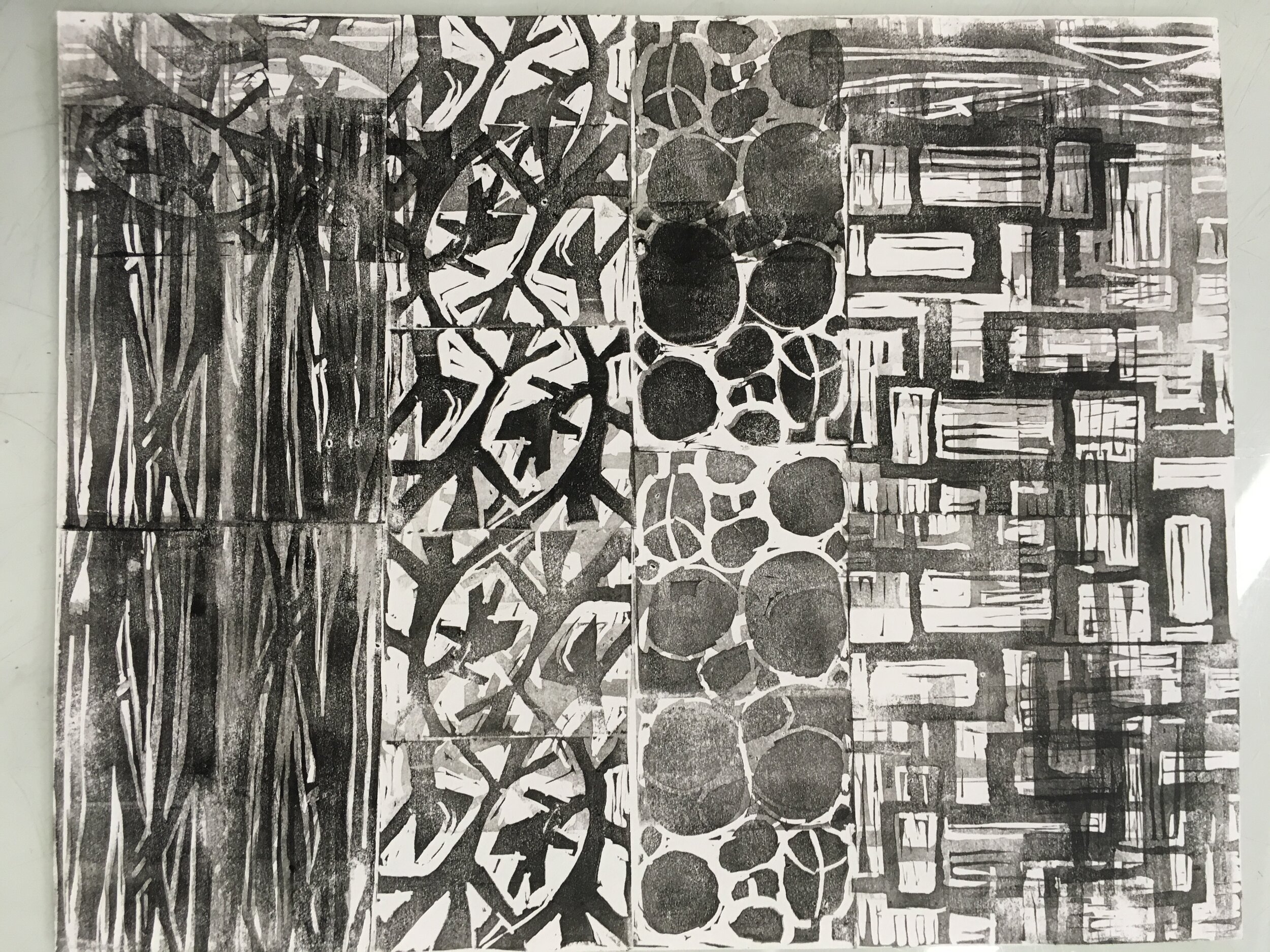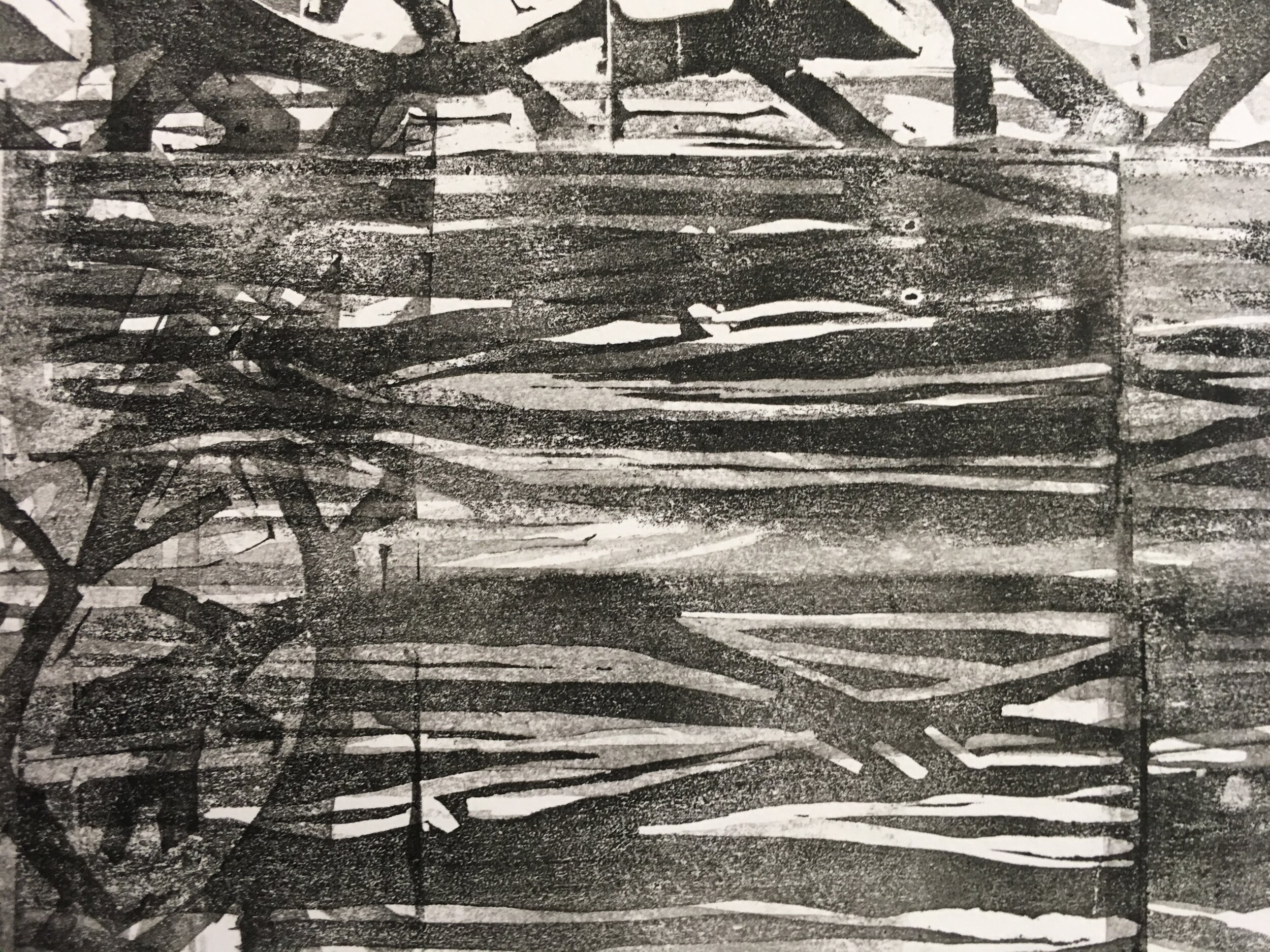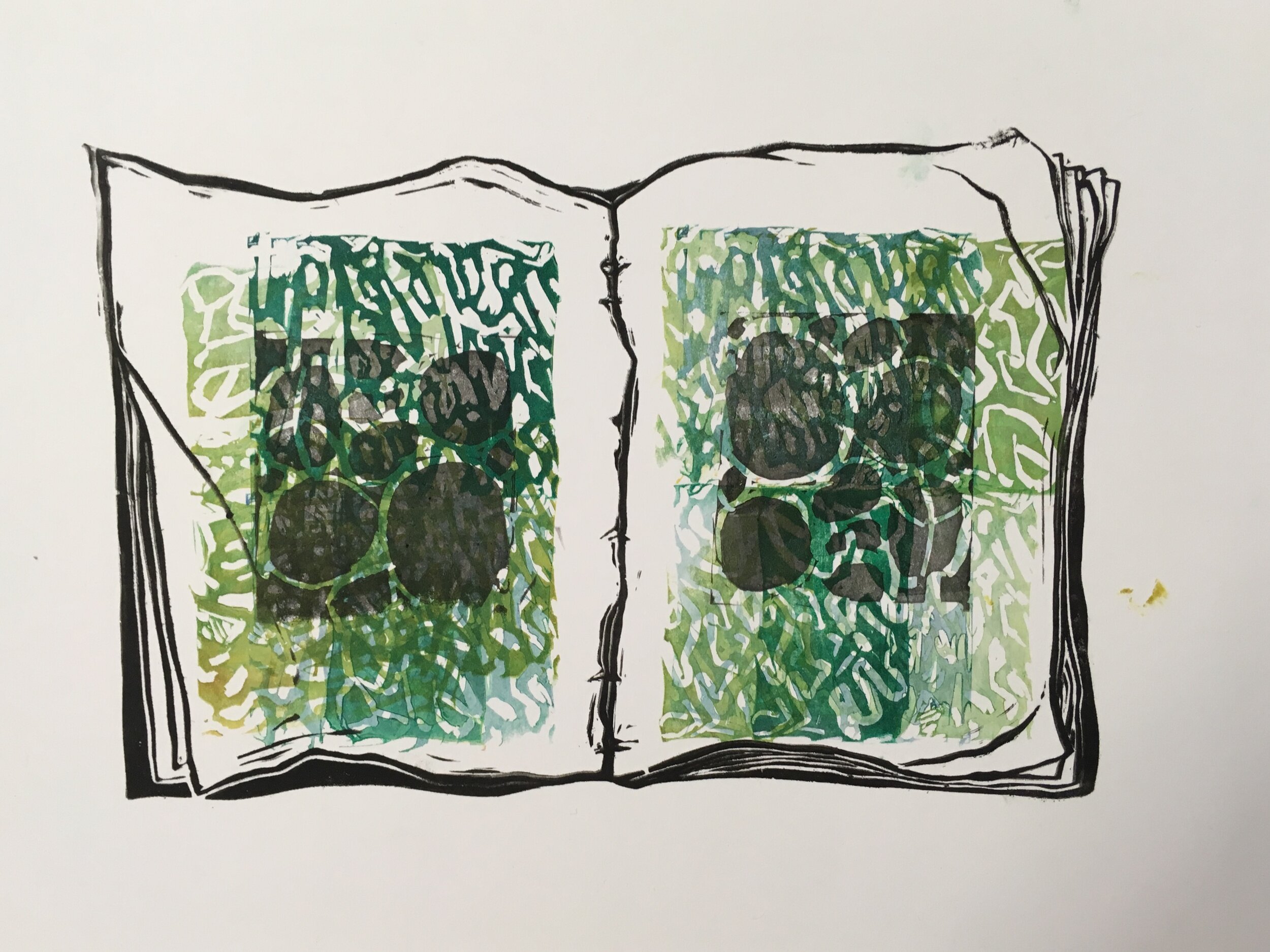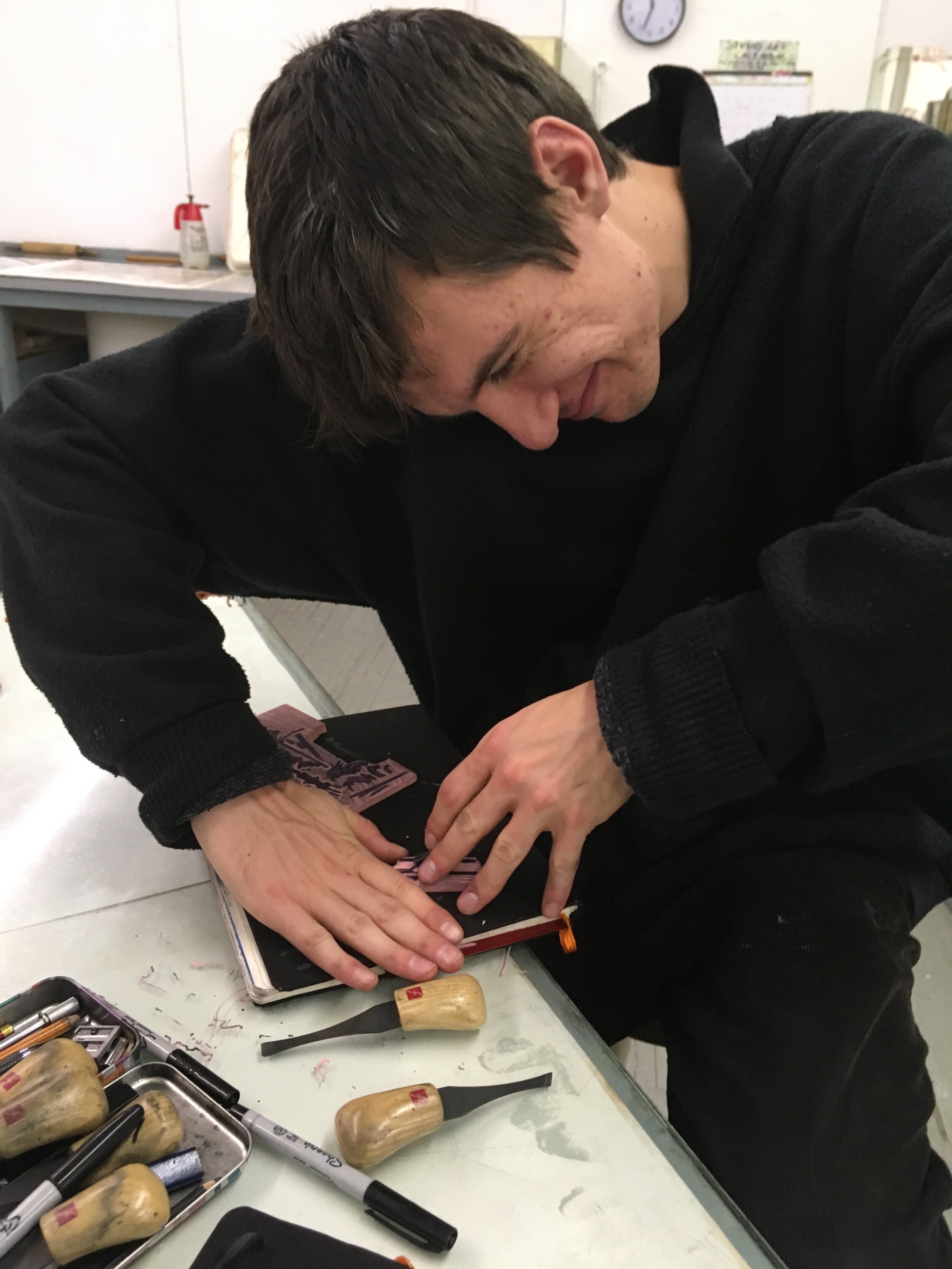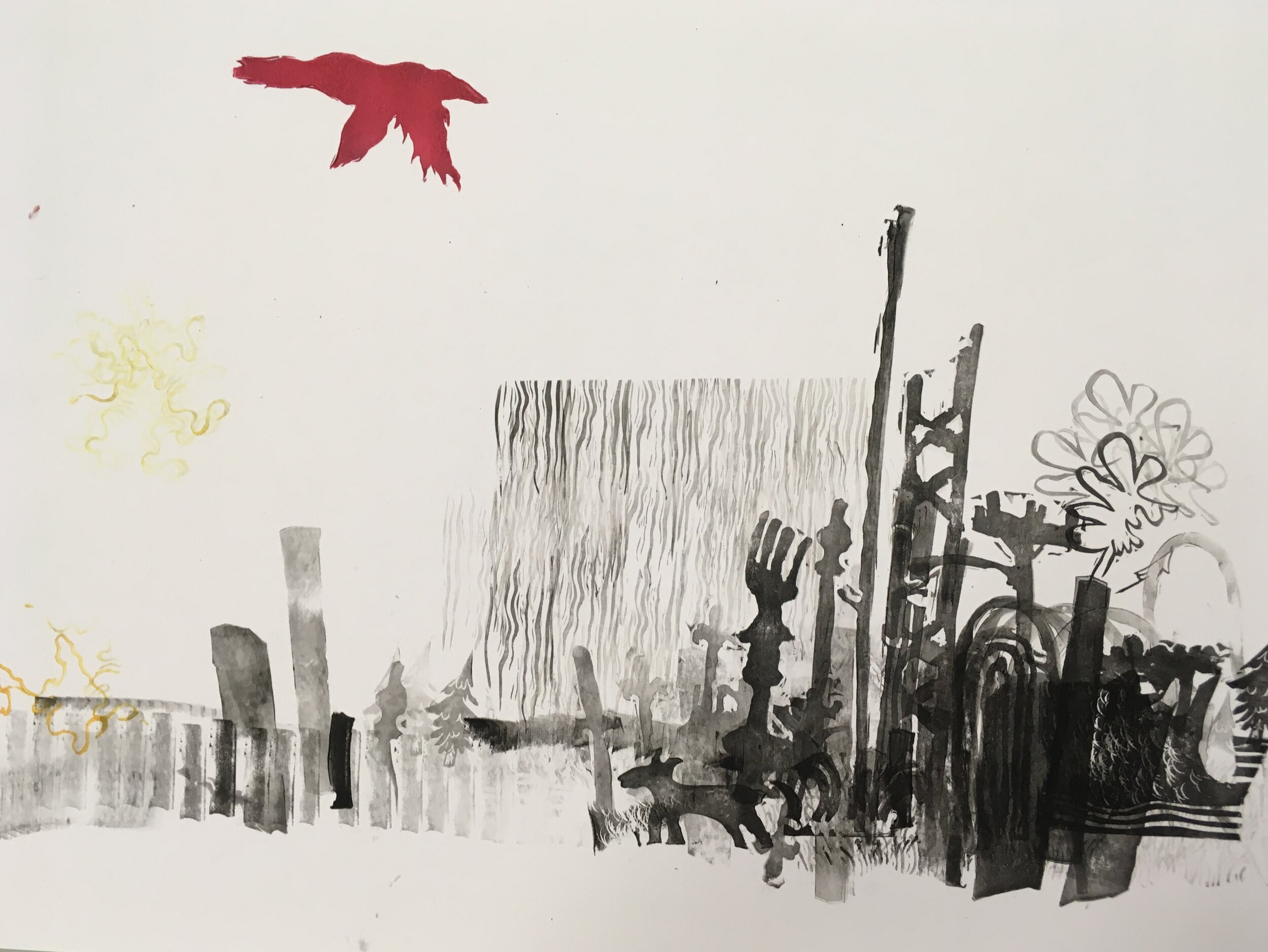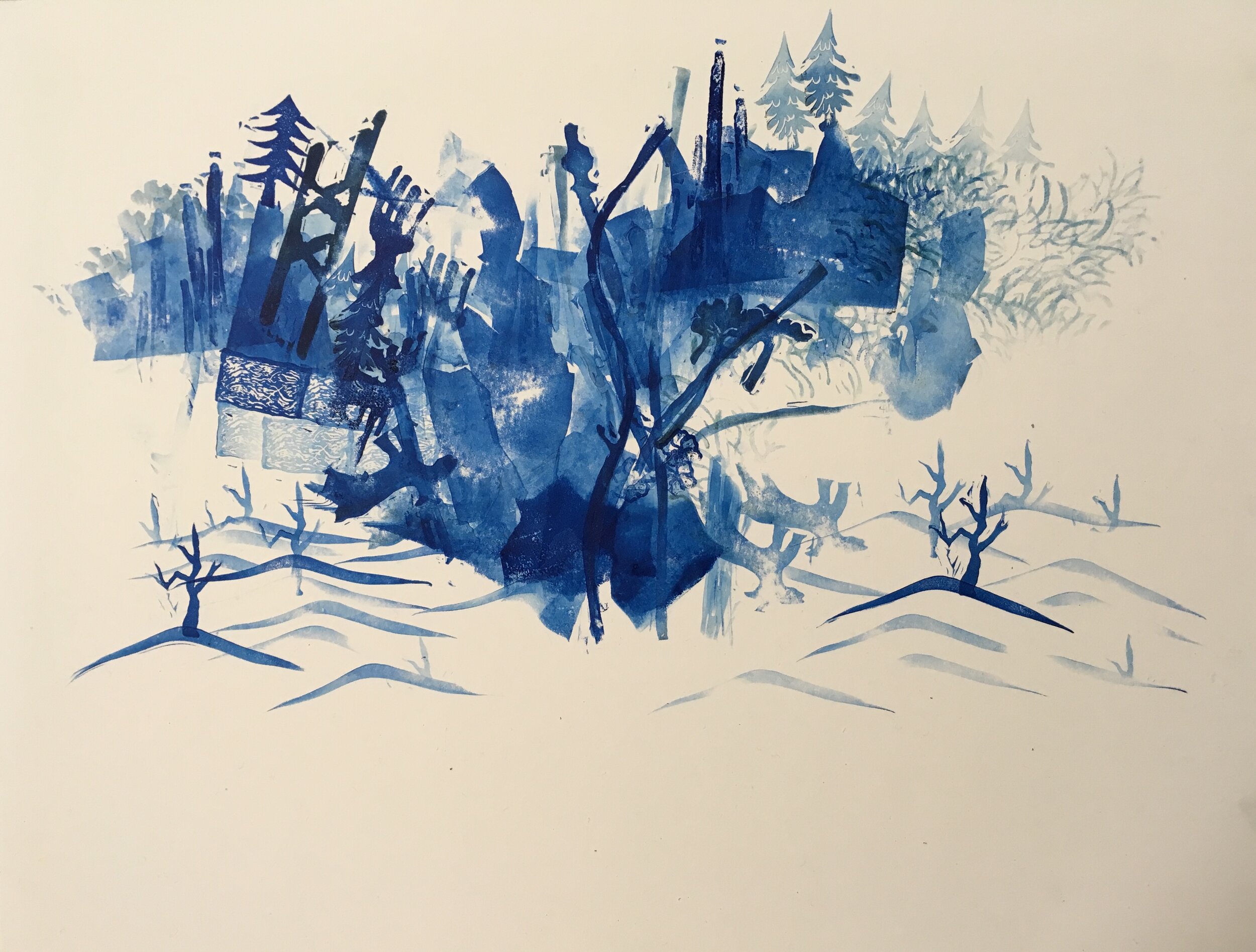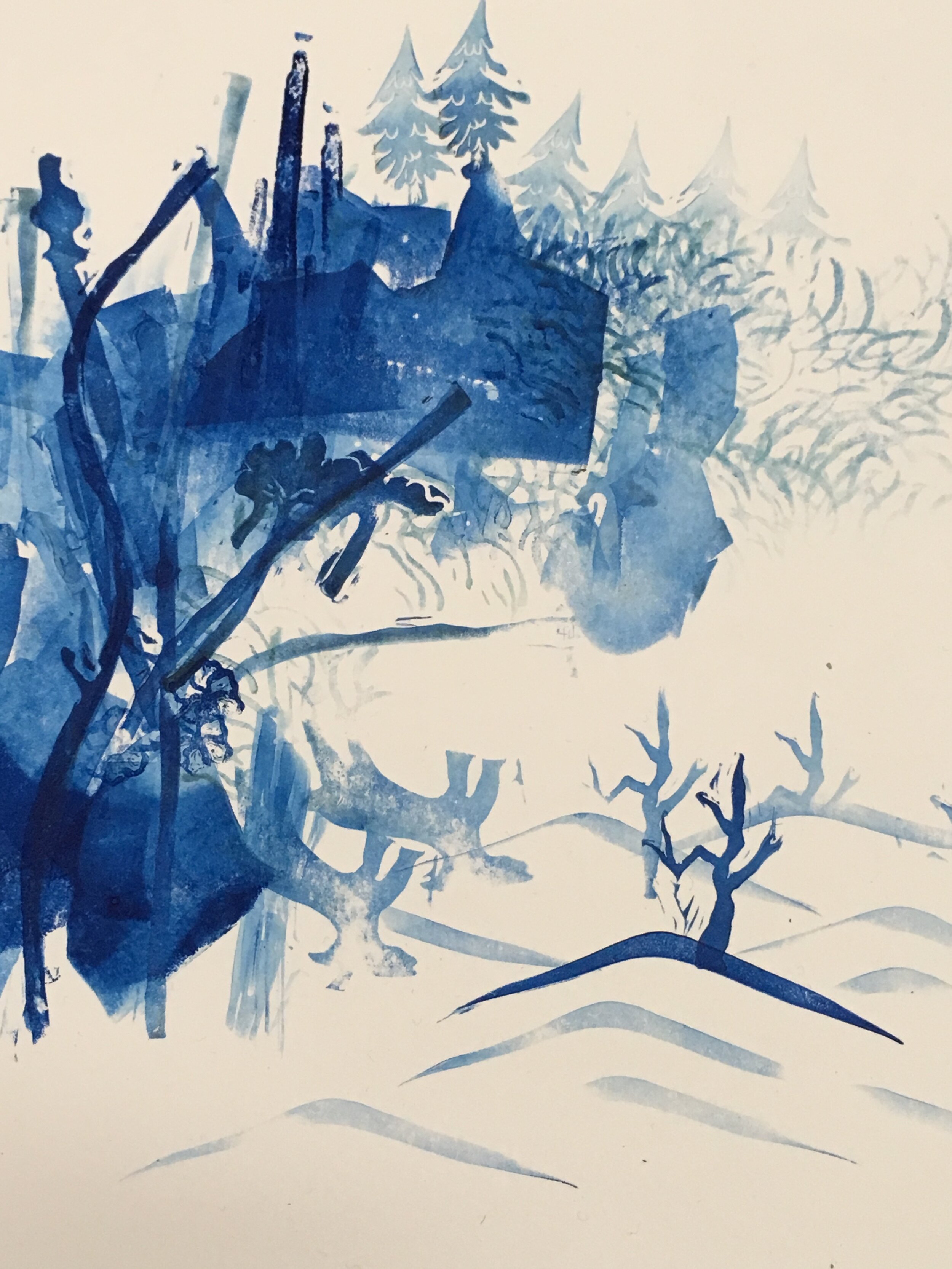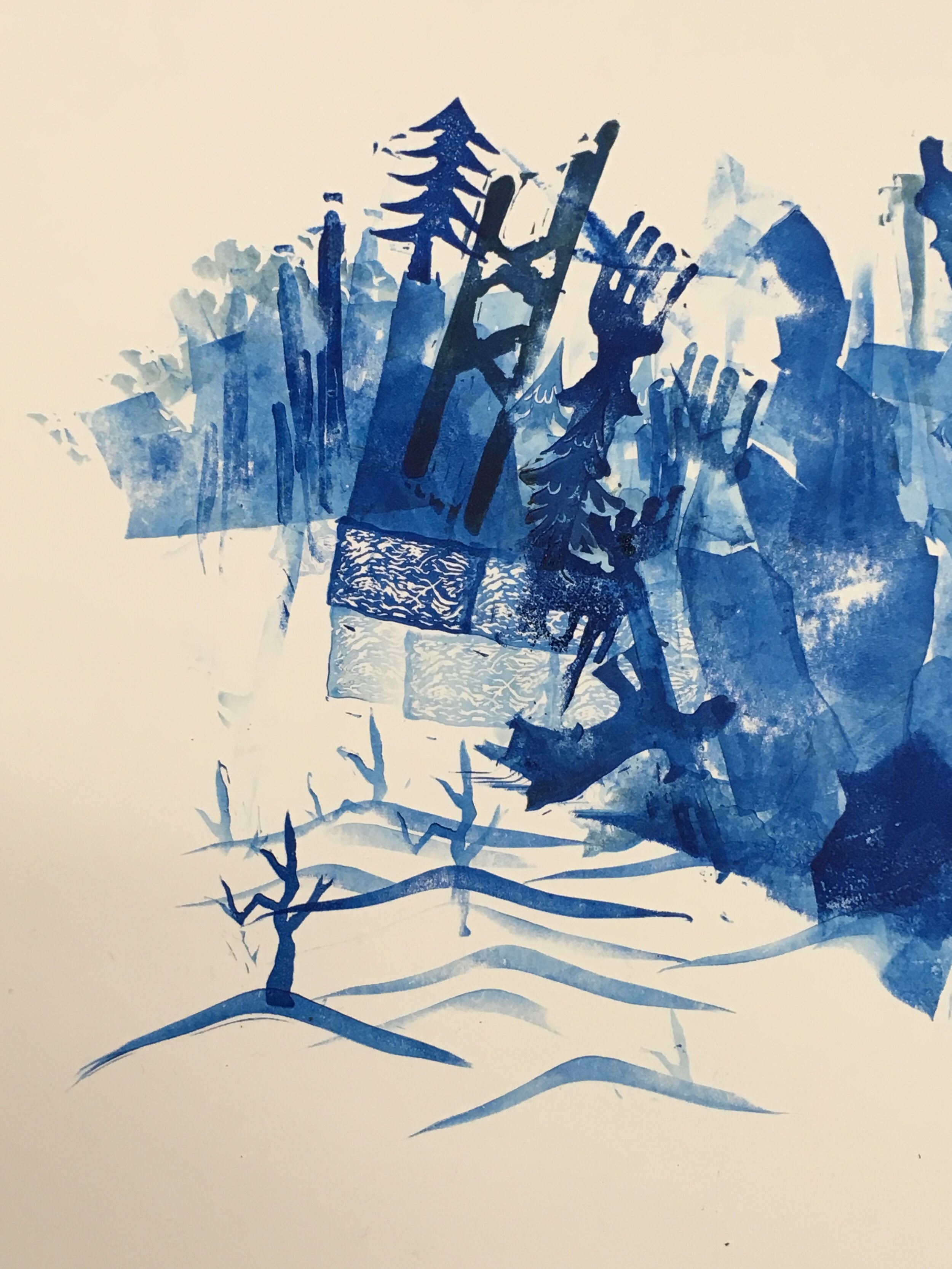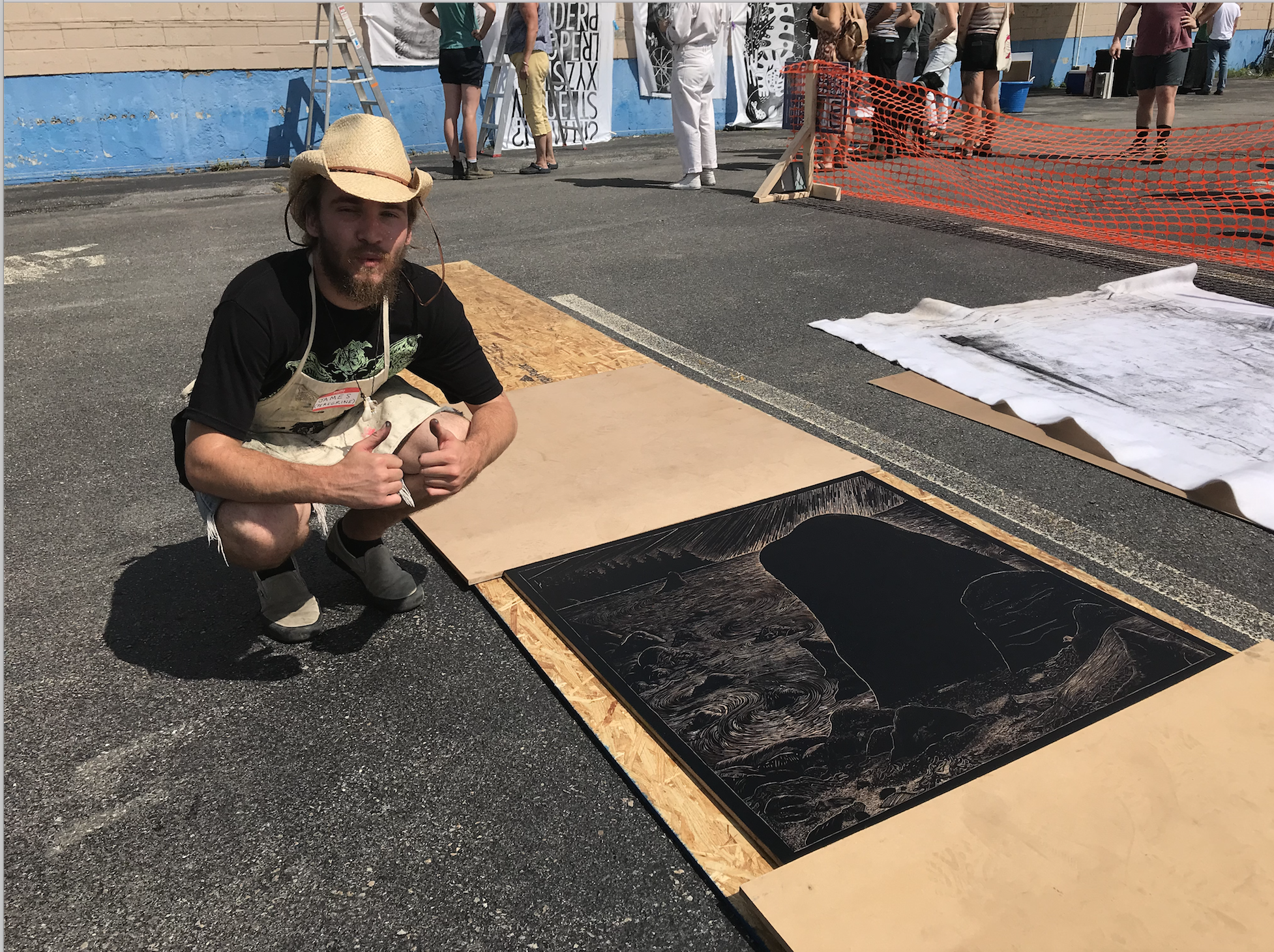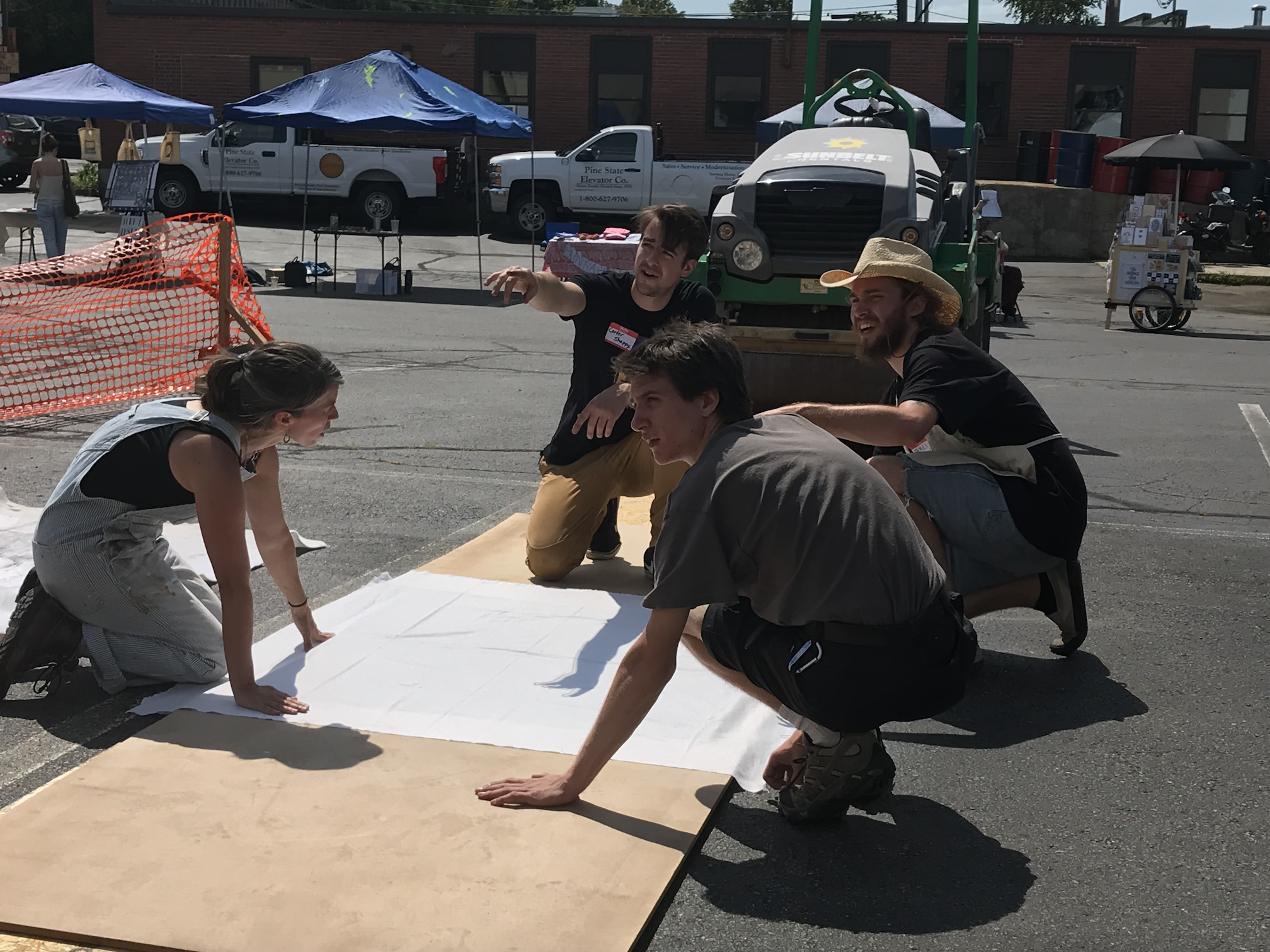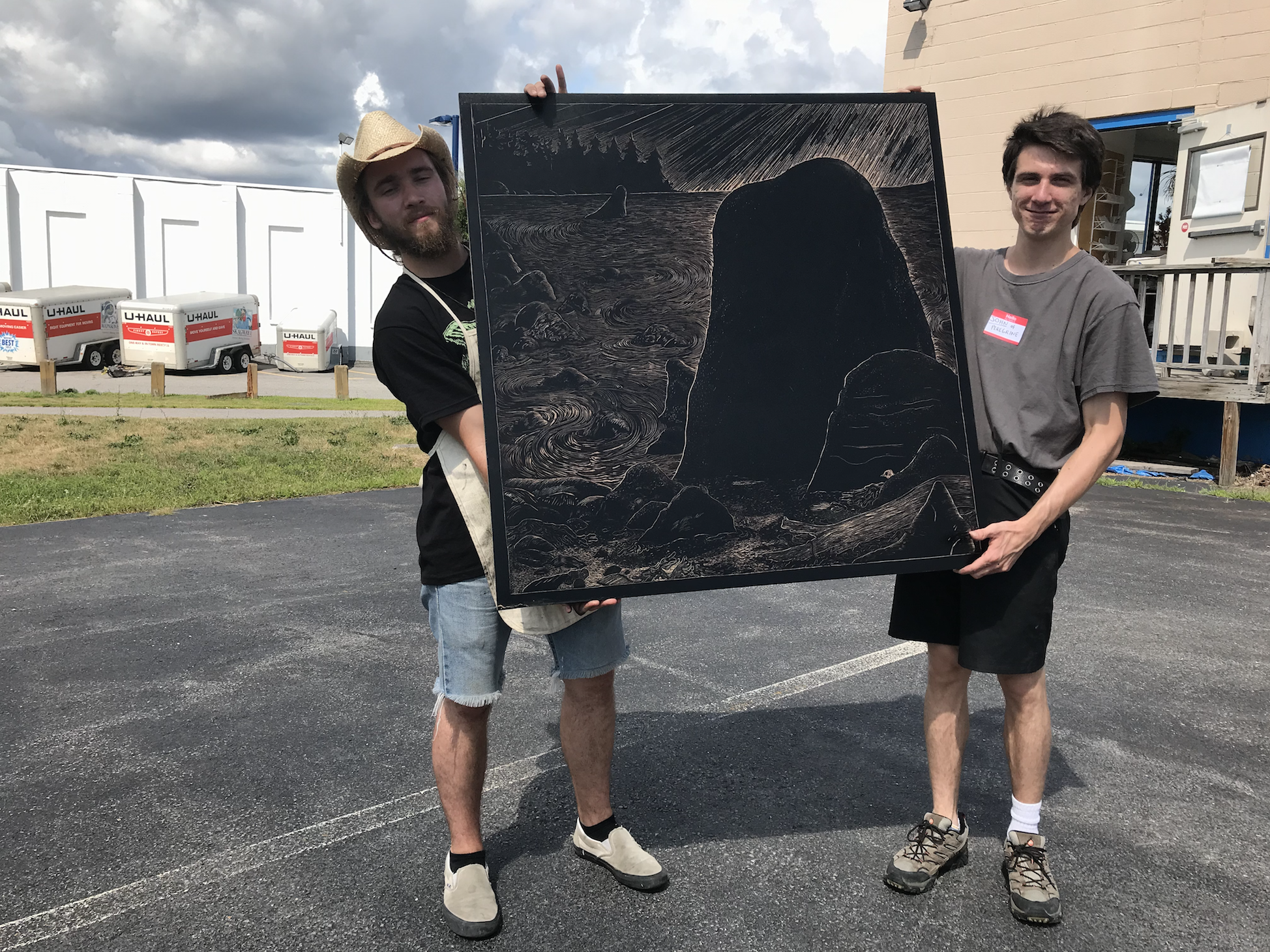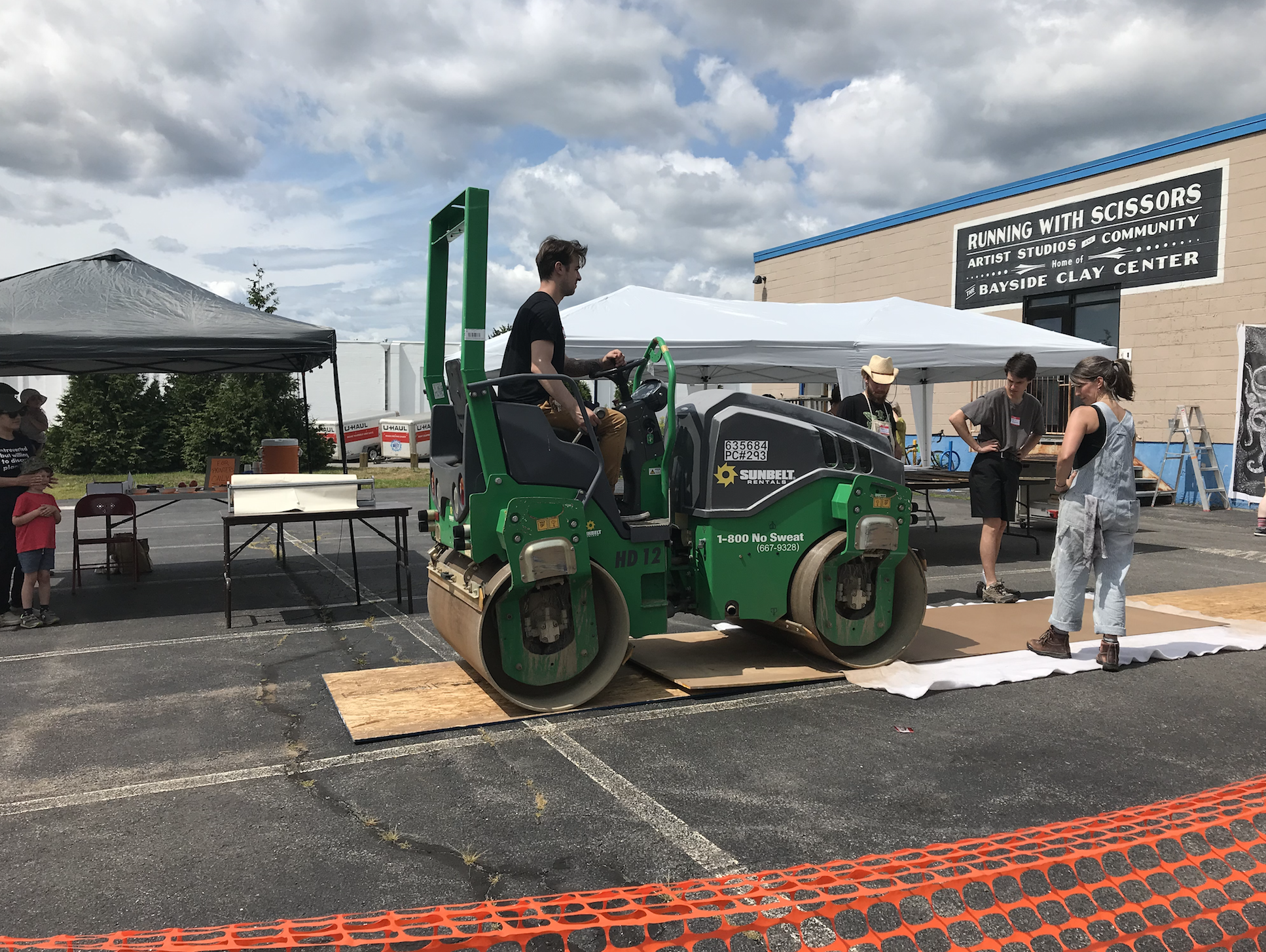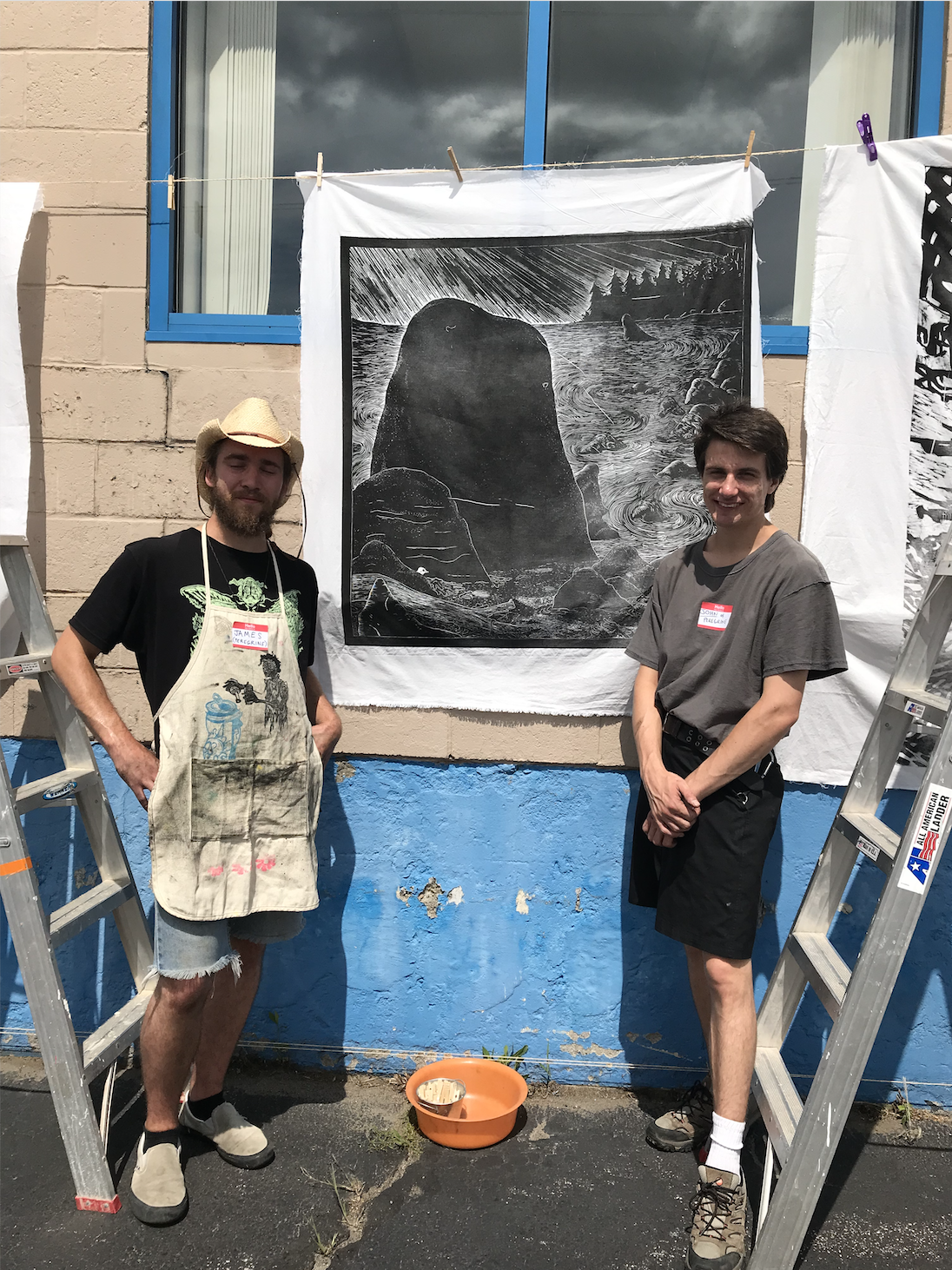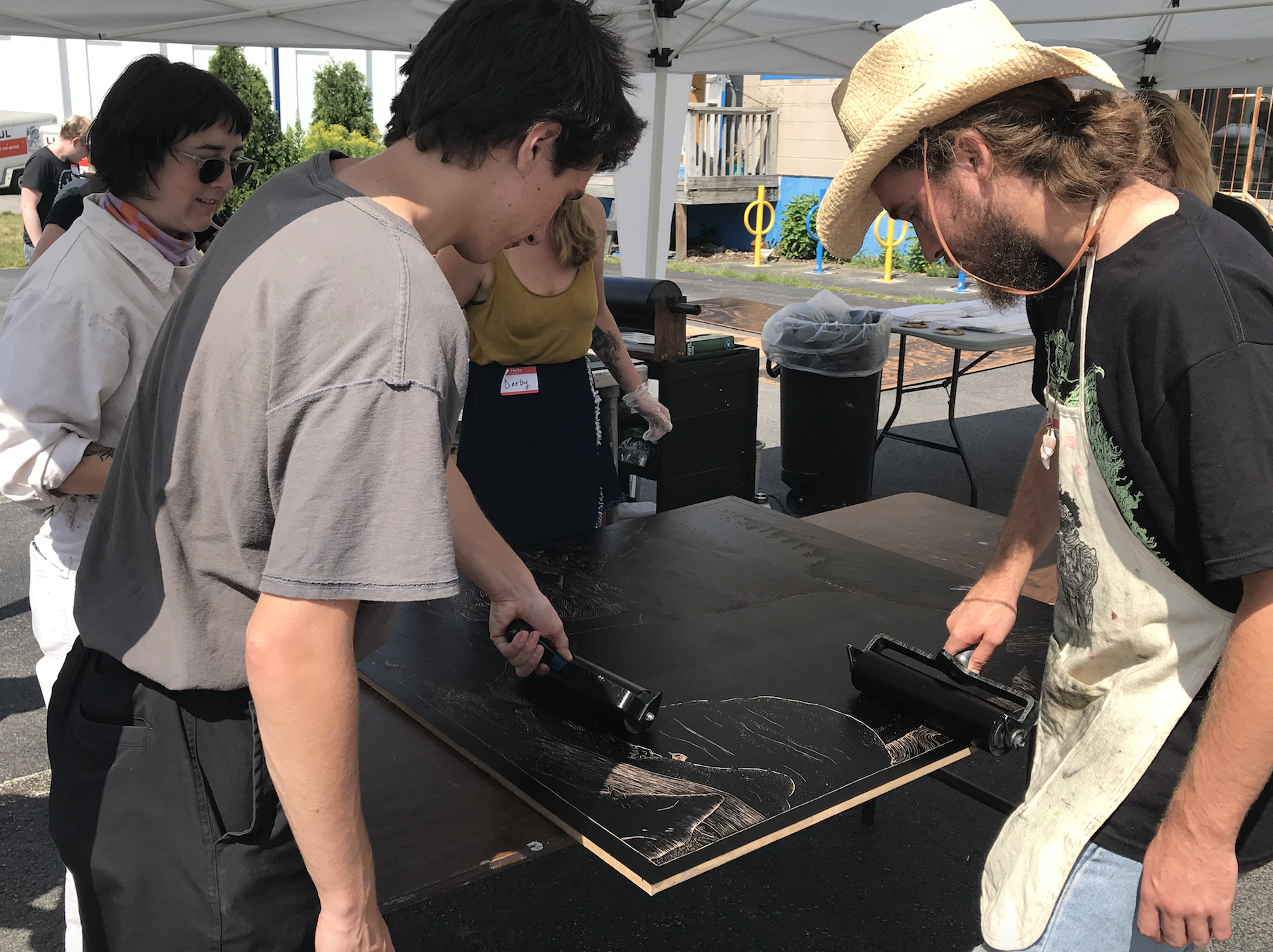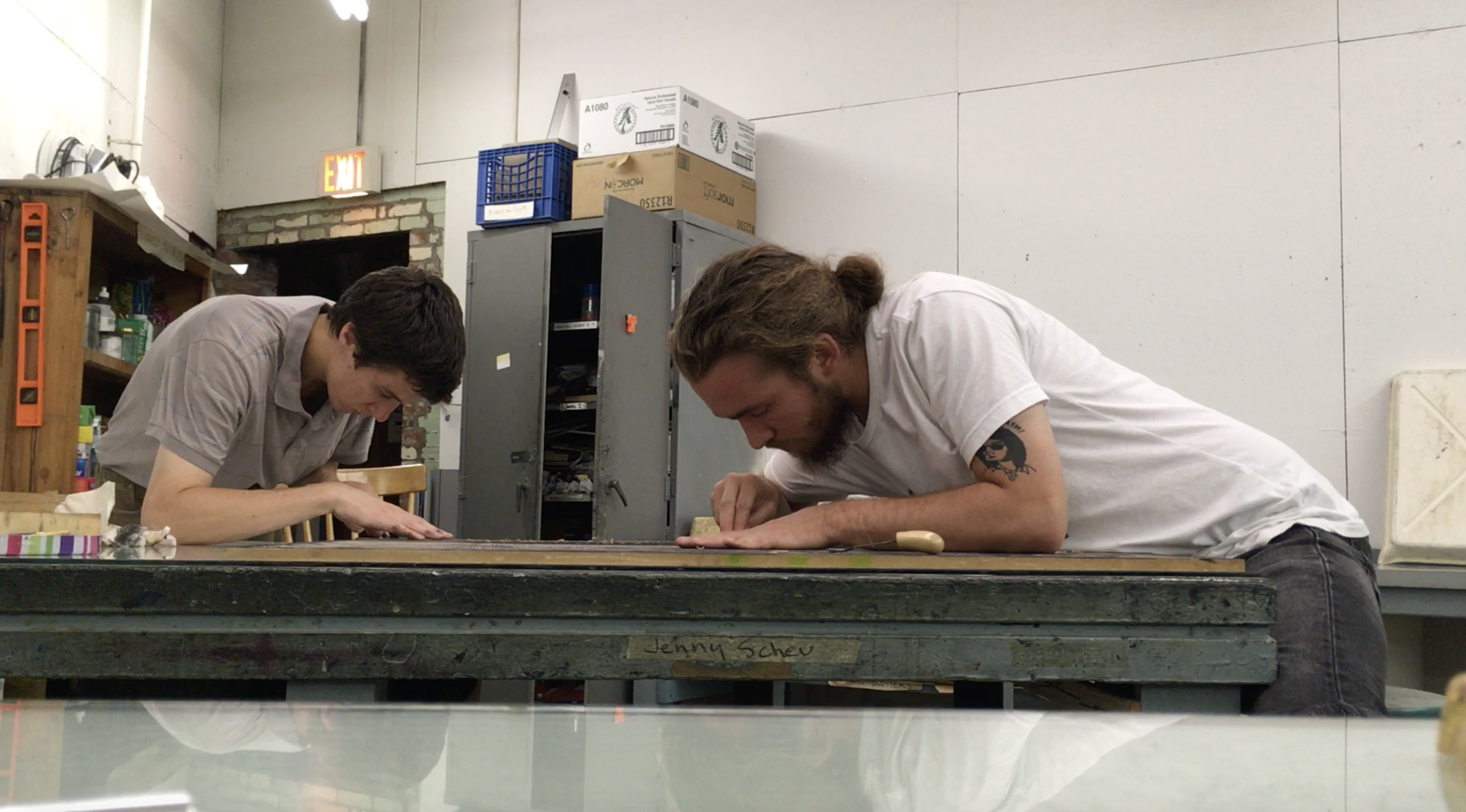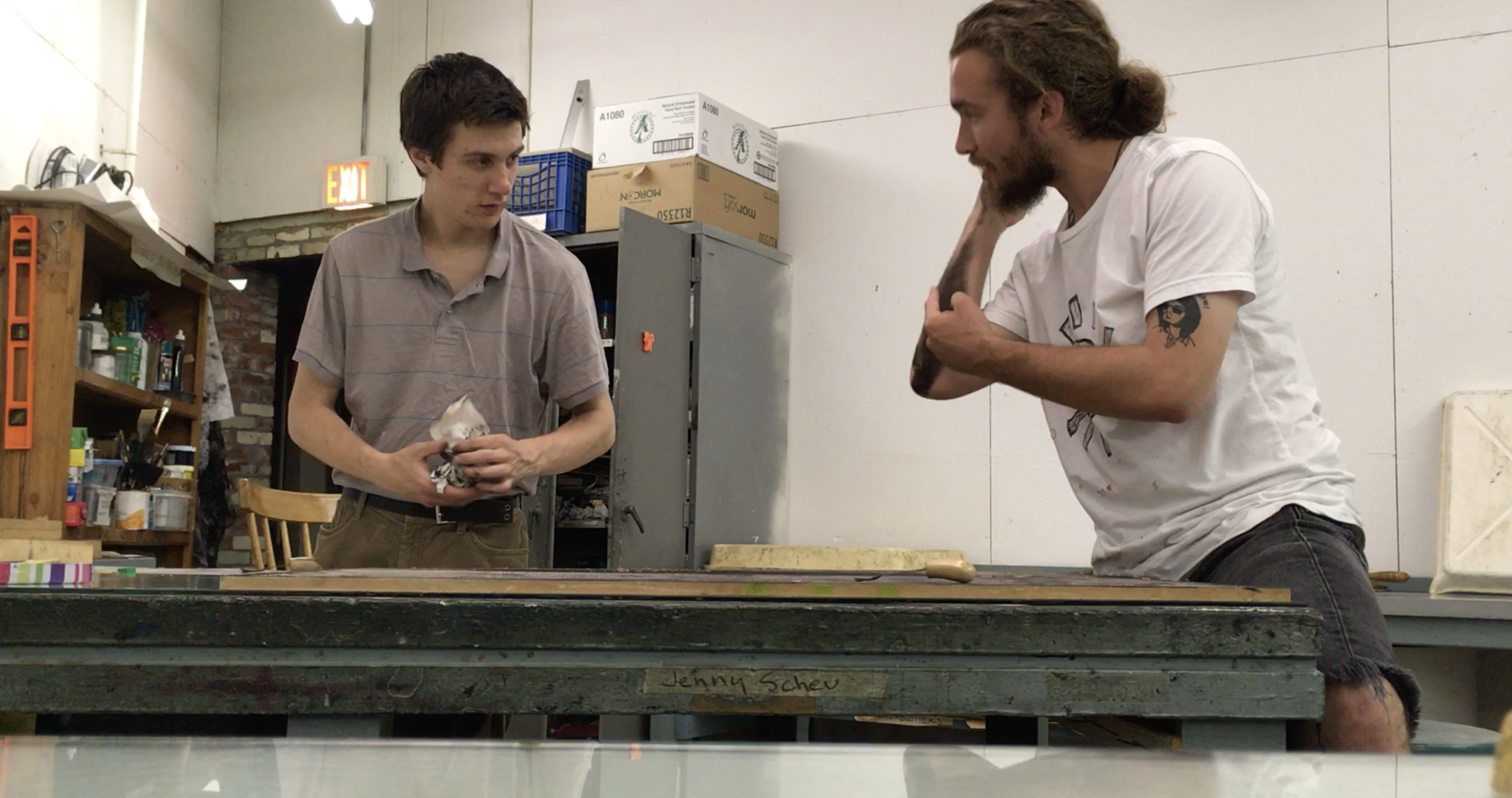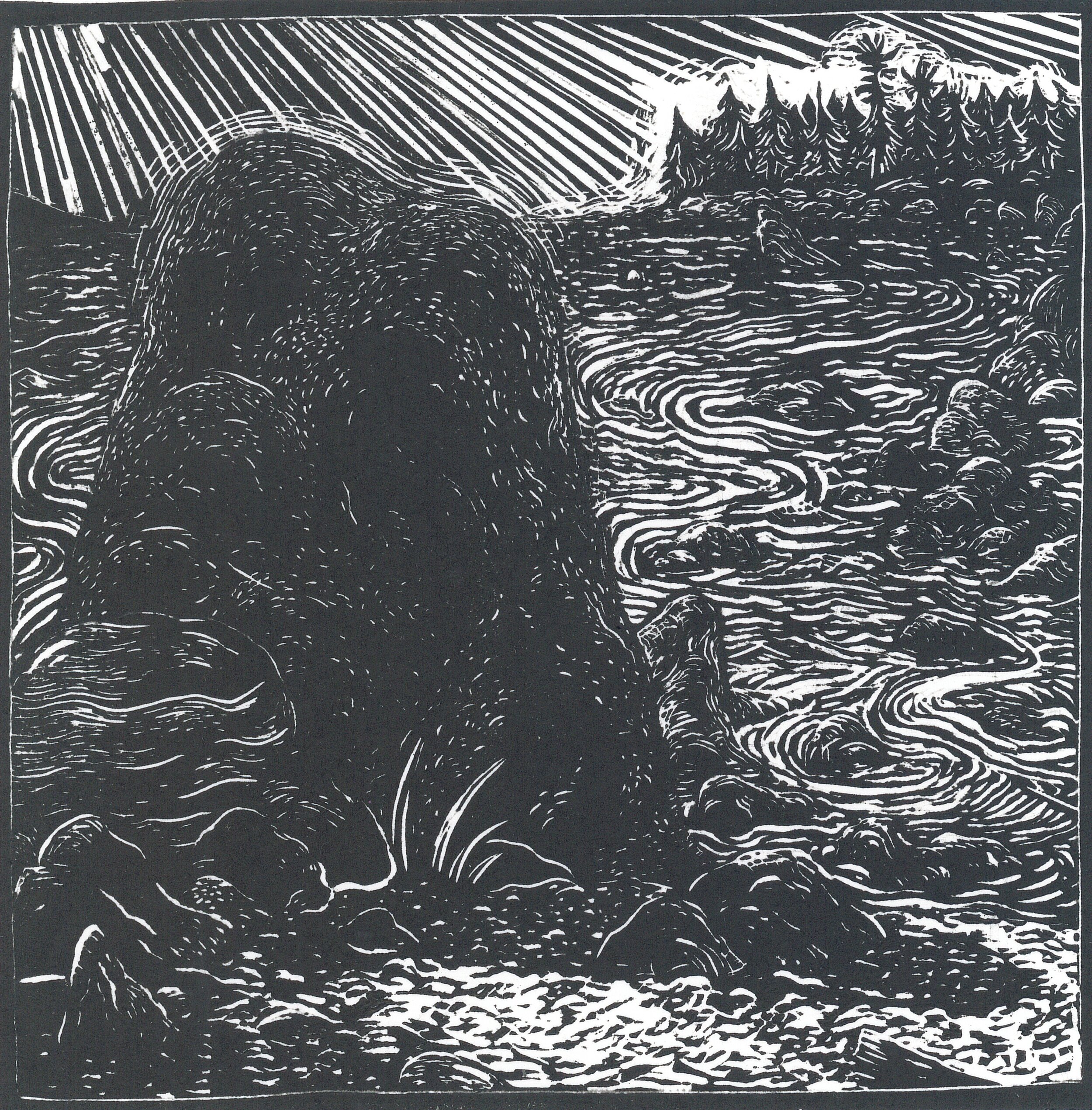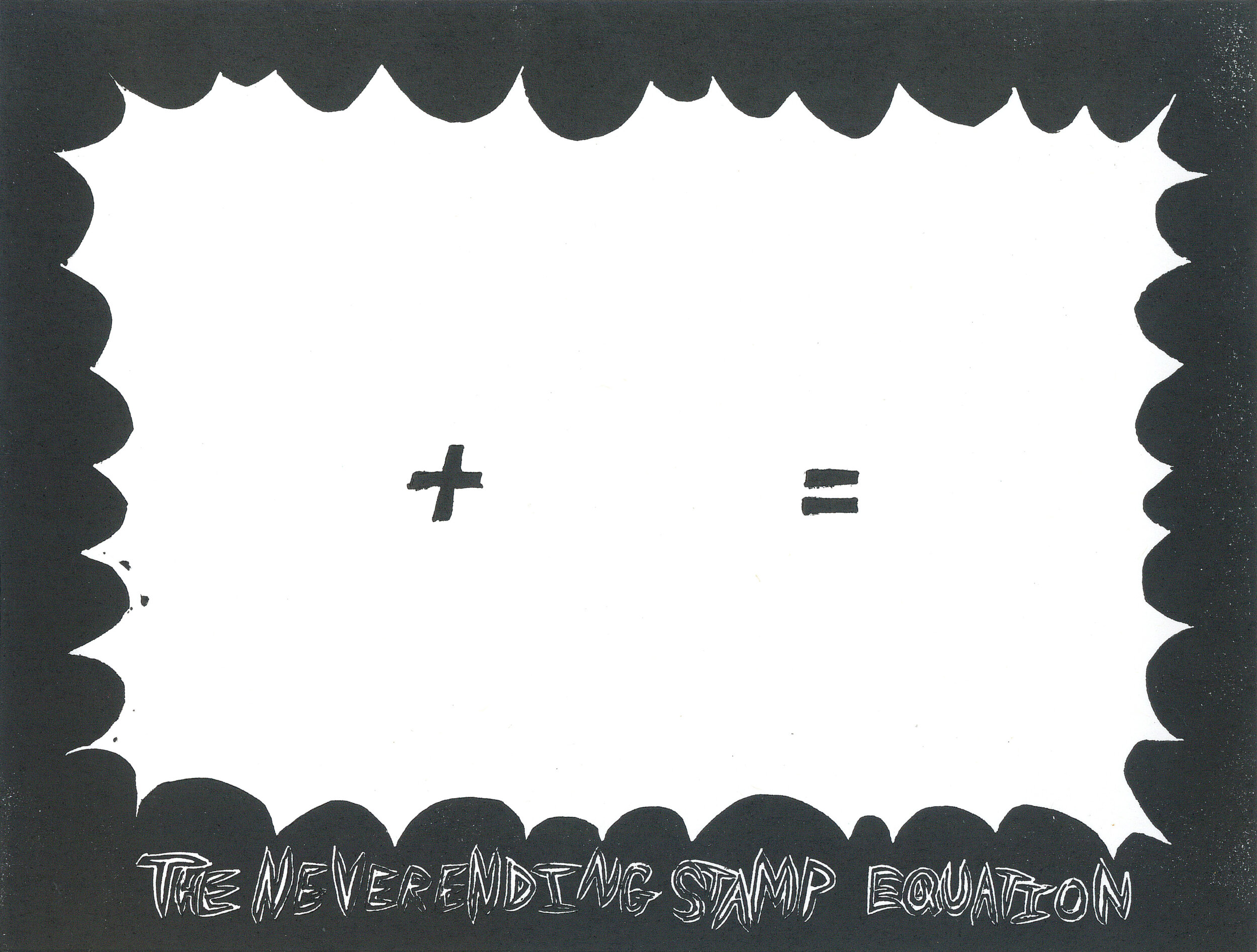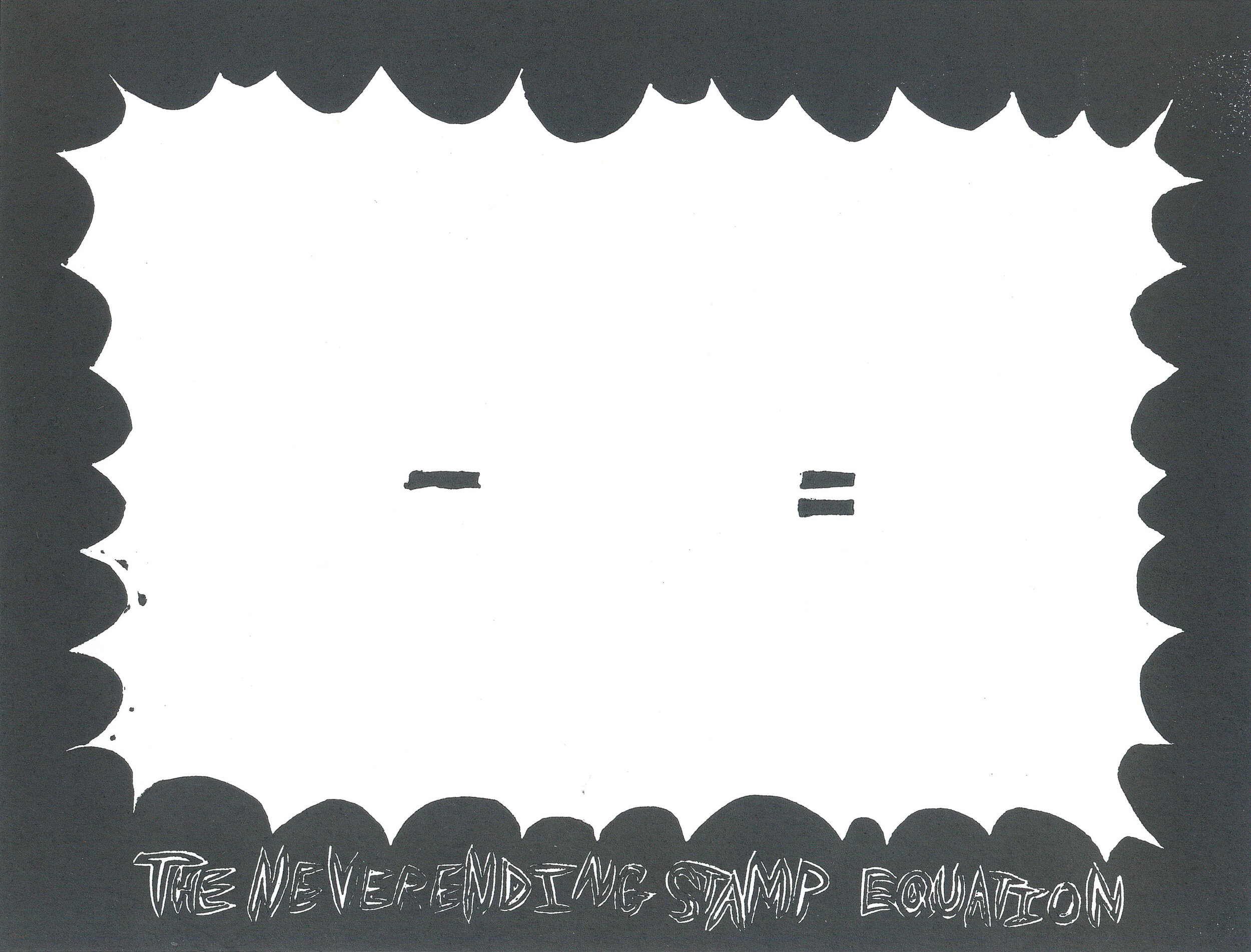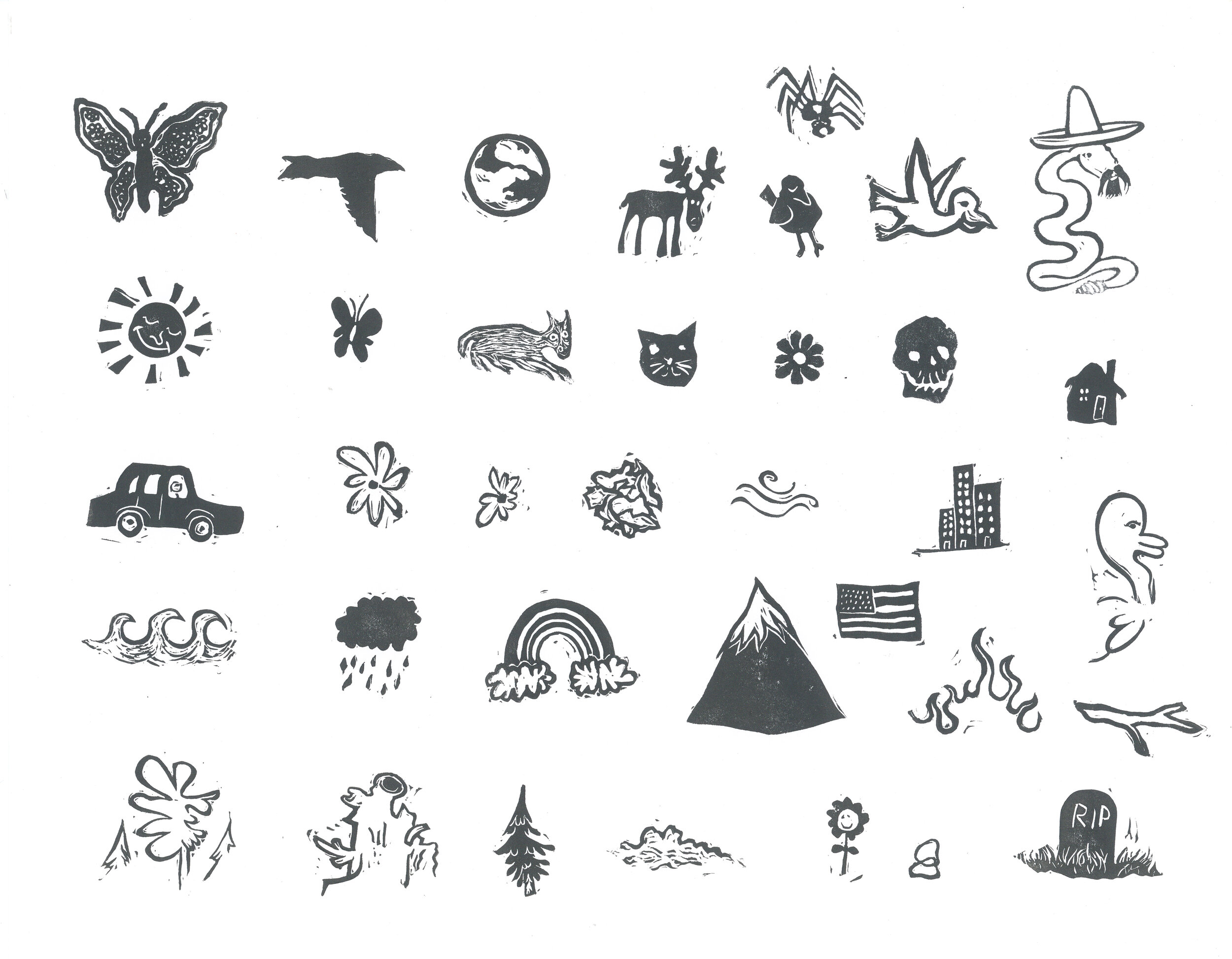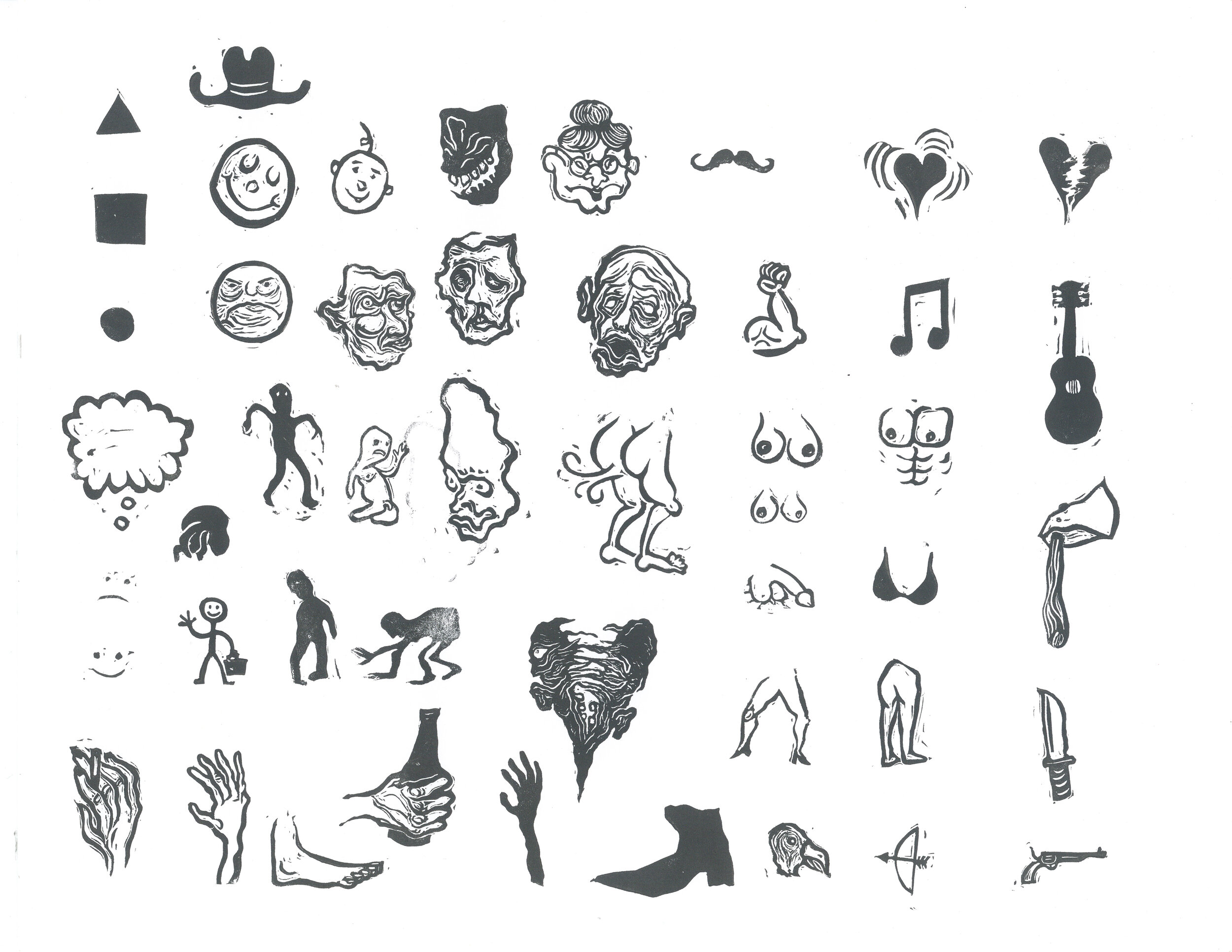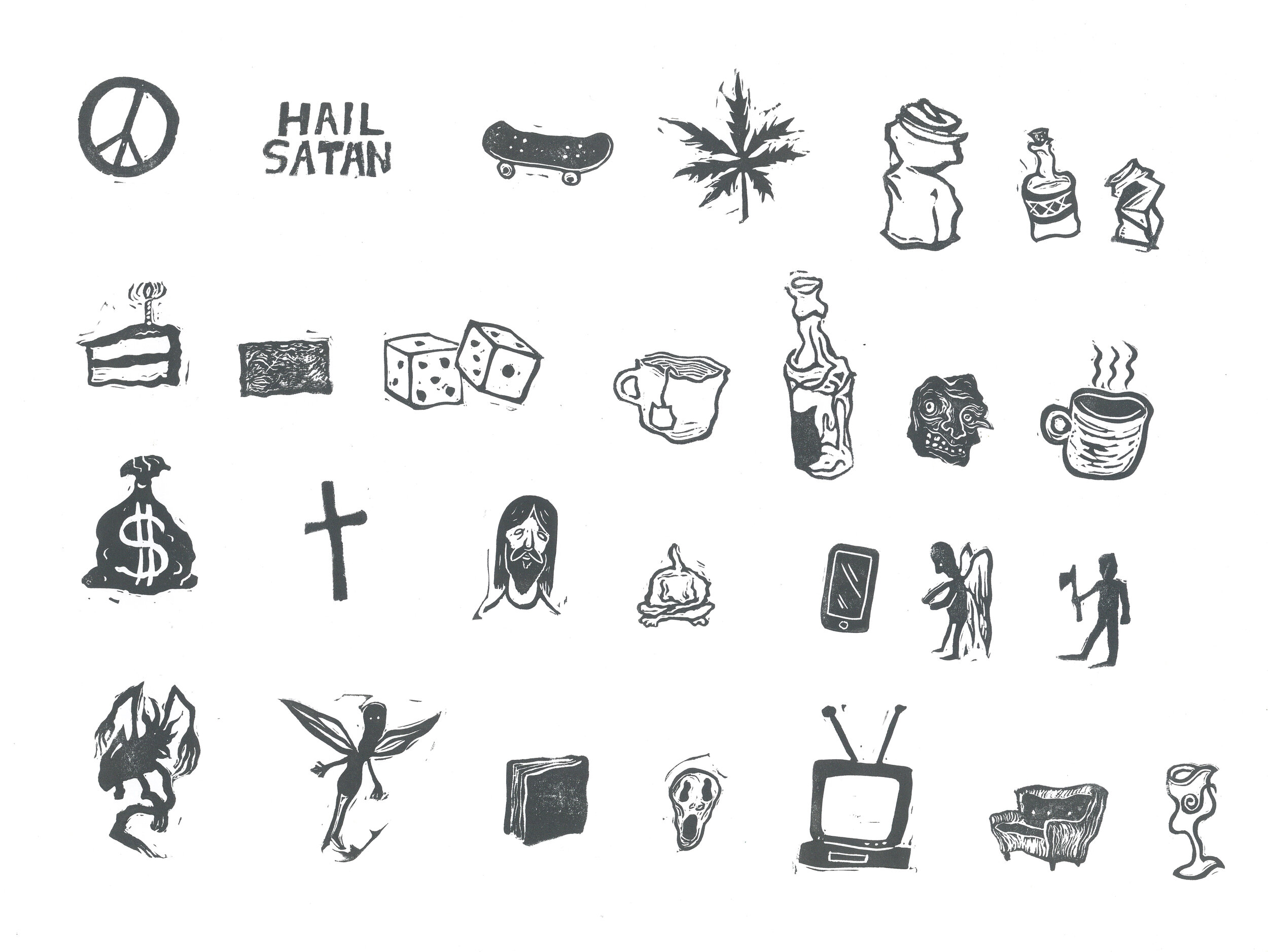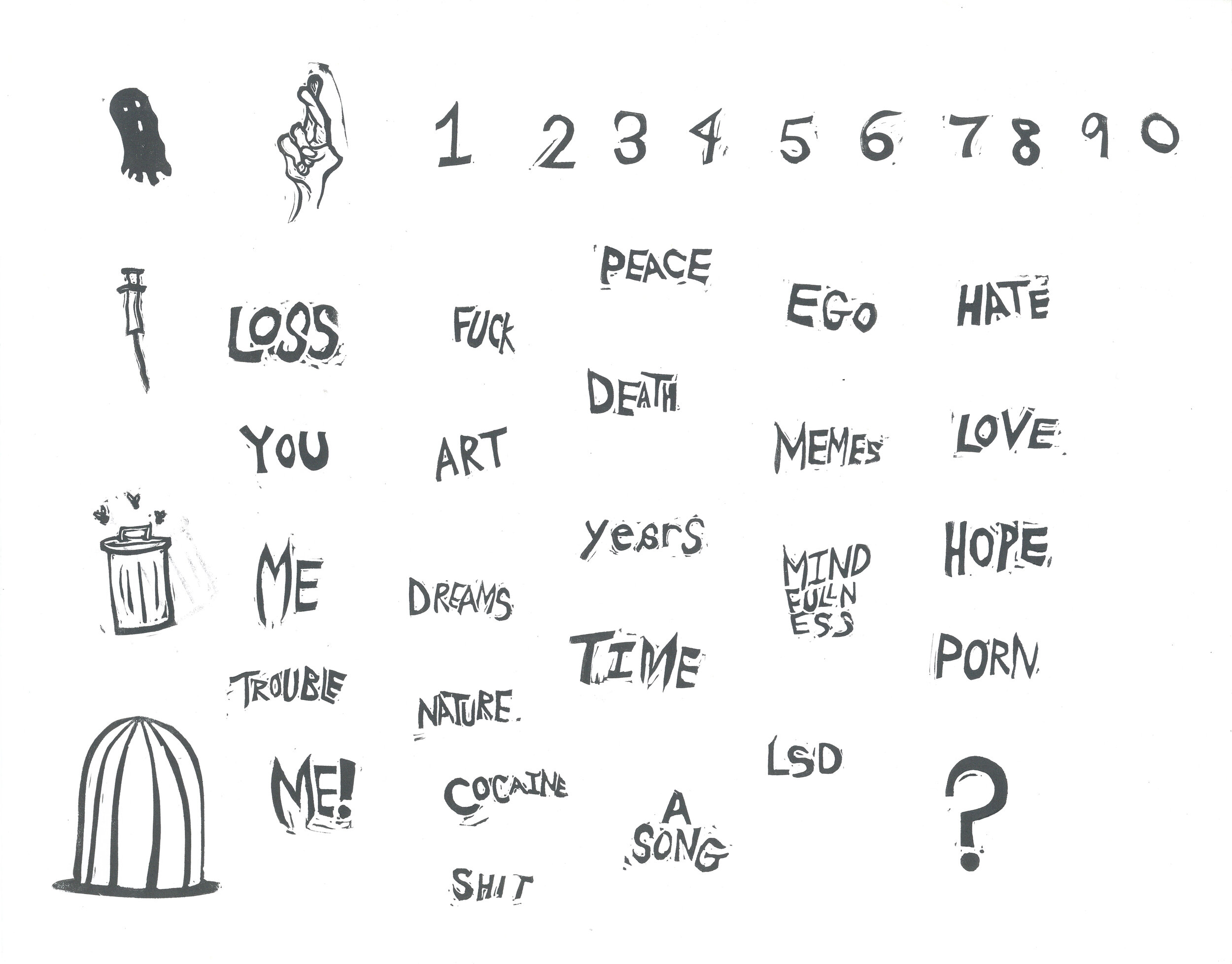2020 home studio visit filmed for Elsewhere Studios “All Hallows Eve Virtual Bash”. Check it out to see a bit of the process I use while creating relief monoprints using lnocuts and stamps!
Reflecting on my March 2020 Elsewhere Studios Residency
I came to Elsewhere in March of 2020 with the goal in mind of spending time in mountainous landscape (something I’ve longed to do since growing up in the suburbs of Connecticut, absent much of such wonder) where I could work on drawings and carvings to fuel a new body of linoleum cut and stamp based monoprints, while in an environment that was supportive and nurturing to my goals. And Elsewhere was just that place.
Upon arriving at Elsewhere and consistently throughout my stay, Carolina and Henry were more than supportive, generously offering their time to give feedback on my work and studio visits, and always checking in to make sure I was comfortable. Paonia itself is a town that is filled with artists and creatives of all sorts, a fact I was quick to learn upon being introduced to many of them at the meet and greet, all of them humble and friendly folks who made me feel very welcome in their community.
Paonia offered me a temporary homebase from which I could drive to surrounding national parks and ranges of mountains to gather copious amounts of reference imagery through sketching and photography. Coming from Maine, where I’ve been living since moving out of Connecticut, it was a treasure to be able to have what felt very much like a temporary home across the country to explore areas of the landscape I would normally not have access to. I spent time making drawings of geography at places like the Black canyon and the Grand Mesa, sketching from landscapes I had never before seen with my own eyes. Here I experienced drawing from life such wonders as deep canyons, rocky mountains, sandstone mesas and looming plateaus. Paonia itself offers its own natural beauty, as it is nestled between the mountains and pierced by the powerful Gunnison river, along which I found myself walking morning after morning. I found a wonderful rhythm in venturing out in the crisp March morning air to sketch, and then bringing my sketches back to the studio where I would work on turning them into carvings until evening. In the studio, I was often joined by Tomatoes the Elsewhere cat, who immediately exuded the energy of an old friend or some kind of spiritual guardian.
After spending time carving and hanging with Tomatoes, when the sun went down I found myself happily caught up in the goings on of the Paonian community often accompanied by my fellow residents. Between free ping pong and pool at the bar across the street, open mics and karaoke, music nights of all sorts (from folk duets to improvisational blues ensembles) there was always a multitude of ways to keep yourself busy in the surprisingly eventful nightlife of this small Colorado town.
This residency truly fueled creative growth of all kinds for me, as I was able to find a fine balance between studio time, community based events where I could get to know all of the colorful characters of Paonia, downtime with other residents, and hiking the inspiring and lively landscape of Colorado. And then halfway through March, the gravity of the global pandemic Coronavirus began to set in and throw things for a spin.
This unfortunately (understandably) cut down on the time I was able to spend building relationships with locals and attending events, but Elsewhere remained inspiring nonetheless. Carolina and Henry did everything they could to ensure the comfort of myself and my fellow residents as the news of the Coronavirus and the onset of quarantine swept the nation and the anxiety and uncertainty of the state of the world swiftly became a factor in my stay at Elsewhere. Even so, Elsewhere was a wonderful place to be quarantined. I spent many nights sitting in the studio's beautiful backyard gazing at the moon accompanied by Tomatoes, and in the cozy living quarters with plentiful in-house libraries that are accessible to all residents. Even when the physical show at the end of the month had to be cancelled in compliance with quarantine regulations, Carolina and Henry quickly came up with an optional alternative way to share our work through a live streamed zoom meeting at the end of the month. Because of this, myself and my fellow residents were still able to share and celebrate the work we accomplished while at Elsewhere to an online community and receive valuable feedback and experience through having such a platform to talk about our work to an enthusiastic and supportive audience.
All in all, Elsewhere Studios very much felt like a space where any artist could go to make the space their own while feeling the magic of those who passed through before them (sculptures, trinkets, paintings and all manner of things from past residents adorn the living spaces, revealing the rich history of artists who’ve spent time there before). It's an environment that is extremely conducive to allowing you the time and space to exist and work and focus on life as an artist and a human following their own inspirations, while simultaneously finding new ones around every corner of this magical little place.
Celebrating the Craft of Print →
Check out this wonderful article detailing the history and evolution of printmaking that I am honored to be a part of. I encourage you to read the informative article that also includes a feature on David Wolfe, a Master printer also based in Portland, Maine. At the bottom of the article you will find a linoleum cut of Portland, Maine I designed for the 2019 Portland Print Crawl, displaying the locations of many of the print shops in the city. Click on each one to view further information about the shops. Big thanks to Colby College Libraries and Wolfe Editions for including my work in the article!
Click on the title “Celebrating the Craft of Print” above to view the article.
Stamp Printing Workshop at Peregrine Press
It’s been 3 years since I started using stamps for printmaking, and over the years I’ve come to love them for their versatility. I led a workshop this weekend at Peregrine Press in Portland, Maine to share some of the techniques and applications of the hand carved stamp that I have picked up over the years. To me, to carve a stamp is not only to reproduce a drawing but it also to create a drawing tool. They can be used very organically to build up marks on a surface, especially when using multiple colors of ink and ghosting techniques in combination with one and other. They can be used as instigators for collaboration, whether through printing a collection of multiple artist’s stamps on a sheet of paper at the same time or through inviting someone else to print a stamp that was not carved by them. I prefer to use them as tools for building up marks or for printing a larger image area through printing a collection of stamps that work well together on the same page. In my workshop, I created exercises that encouraged participants to discover the possibilities that stamp based printmaking allows for, and the result was quite fun! Lots of stamping on top of others work and talks of the liberating idea of using stamps in accompaniment with other printing processes to build larger images. Here are the exercises I included in my workshop:
Exercises:
create a stamp that you want to use as a repeatable pattern
create a stamp that is a component of a landscape
Tree, plant, rock, grass, etc
Once we have all created our own components, we will work collaboratively to build up a landscape together using stamps.
Create a texture that can be used to build up a large area of marks
Lines, waves, crosshatching, stipling, etc. Digging into your stamp mindlessly and then printing the result can even produce interesting textures and visuals once stamped multiple times.
Stamps can be drawing tools as much as they can be a way to reproduce an image.
Using this texture, build up layers of colors
Create a small seal for use in signing prints
Remember, this is relief printmaking, so any words or letters will have to be carved backwards.
Optional: create a few separate carvings that will work together in some way. I.e. a flower vase and multiple kinds of flowers, a couple of birds to create a diversified flock, etc.
Surface Experimentation
Try printing your stamp on paper, gessoed wood, and rocks!
Fun fact, every single monoprint I have uploaded on this website uses some kind of stamping. Take a look at the gallery here: https://www.jamesylvester.com/monoprints
New Animation!
Collaborated with Mazie Bartels-Biswell on an animation this past weekend. Here is the result!
2019 Steamy Summer Print Jam
This past summer, I worked closely with my friend John Costello to draw and carve a 4’x4’ woodblock, with the help of a few other members of Peregrine Press. Together we represented Peregrine at the 2019 Steamy Summer Print Jam, where we printed the block using a steamroller that Running with Scissors (the host of the event) had rented. The event is always a blast, this year featured blustery winds sending vendor’s tents flying and the largest number of woodblocks printed at it yet.
To get to the final design for the block, John and I both created compositional sketches inspired by a day drawing at Two Lights State Park in Cape Elizabeth, Maine. We then chose a final composition, and each created a small linoleum cut study. We then transferred my small study onto the 4’x4’ block using transfer paper (after scanning and printing the small study out on 4’x4’ scale) finalized the drawing in sharpie in order to make it clear for other collaborators which areas needed carving, and then carved away, sealed the block to make for easy printing and were ready to go. Already looking forward to next year!
The NeverEnding Stamp Equation
The NeverEnding Stamp Equation is an ongoing collaborative project where participants choose stamps carved by myself to fill in blanks in an empty equation. Their unique equations combine their choices and intention with my repeatable matrixes, and result in personalized statements printed by each individual rather than myself. I began this project at the 2019 Pickwick Print Fair in Congress Square Park in Portland, ME. The project is designed to never end, so I will continue to create equations with any and all who have interest in the project and sharing it at events whenever I can. There are many equations I have thought of that have not yet been made, and many that have been made that I may have never thought of. Pictured below are the empty equations and spreadsheets displaying the stamps that make up the NeverEnding Stamp Equation. Collaborators can choose any combination and number of stamps to use to print their equation, the only limit being the empty space given in the equation and the bounds of their imagination. Visit the link below to see the first round of equations!
https://www.jamesylvester.com/the-neverending-stamp-equation
Testing One's Own Imagination
Hey ya'll! Check out this article (linked below) written for the Maine College of Art website, where I detail some of my thought process that goes into creating my monoprinted etchings and relief prints, then go take a second look back at the monoprints I have on this website! Many of them are made using a process I talk about in this article, where an "empty stage" matrix is created, designed to be filled with other variations of smaller prints to tell different visual stories.
Portland Pechakucha 2017
In October of 2017, I gave this Pechakucha presentation on how I keep my art practice fun using monotyping and relief printmaking techniques, and got to tell some stories about how I maintain a process that can be feel a lot like playing. I love any opportunity that gives me a platform to convince people creating "fine art" can be similar to creating a castle of legos or weaving a storyline between two action figures as a child- hope you enjoy this video of my talk!


